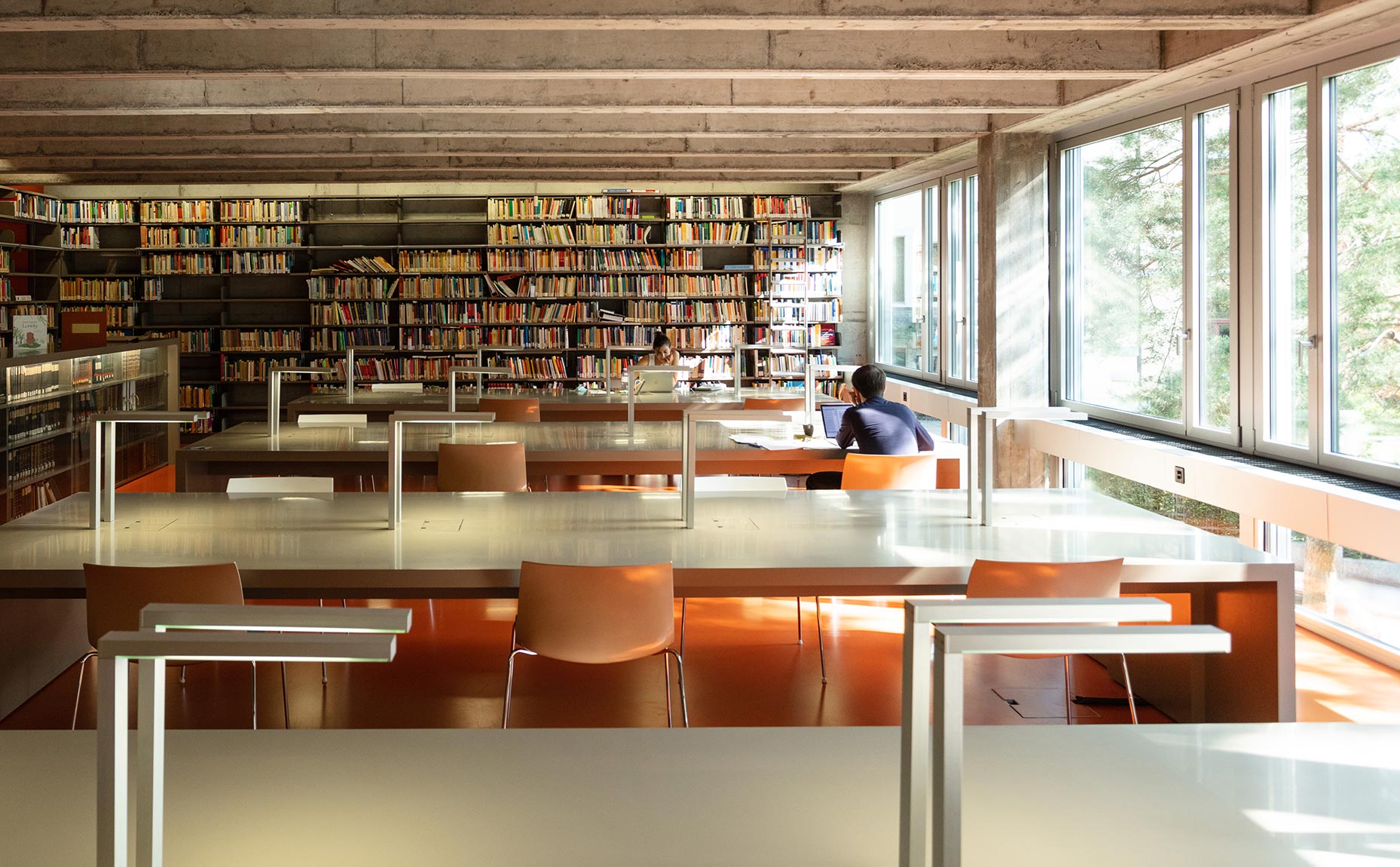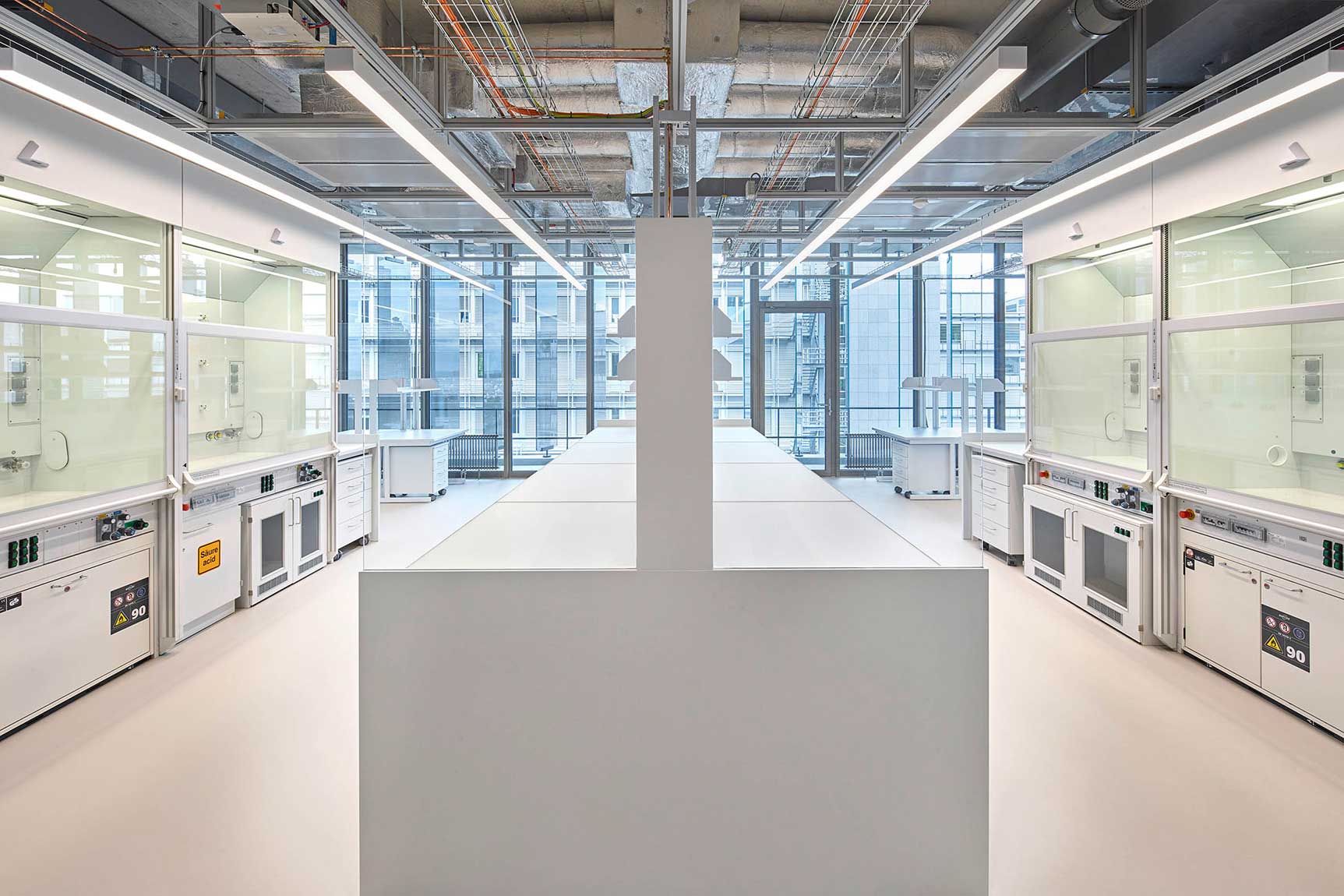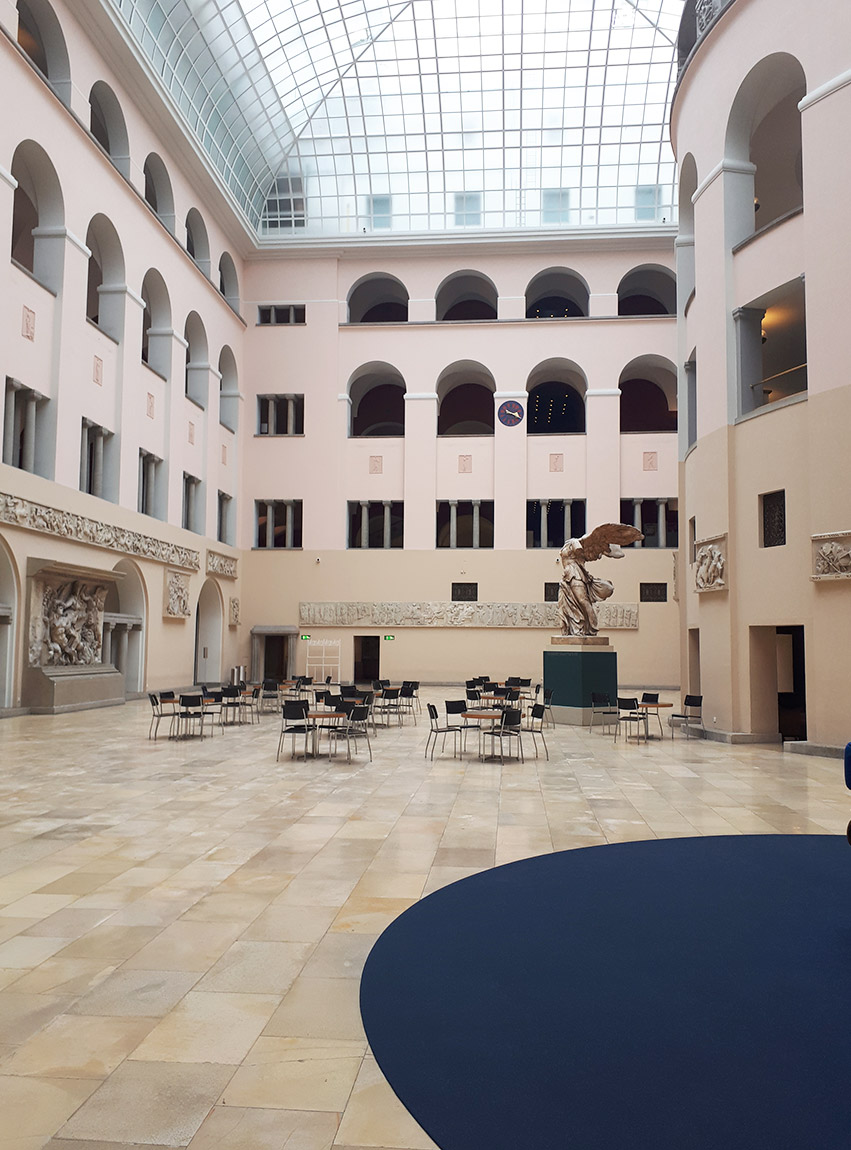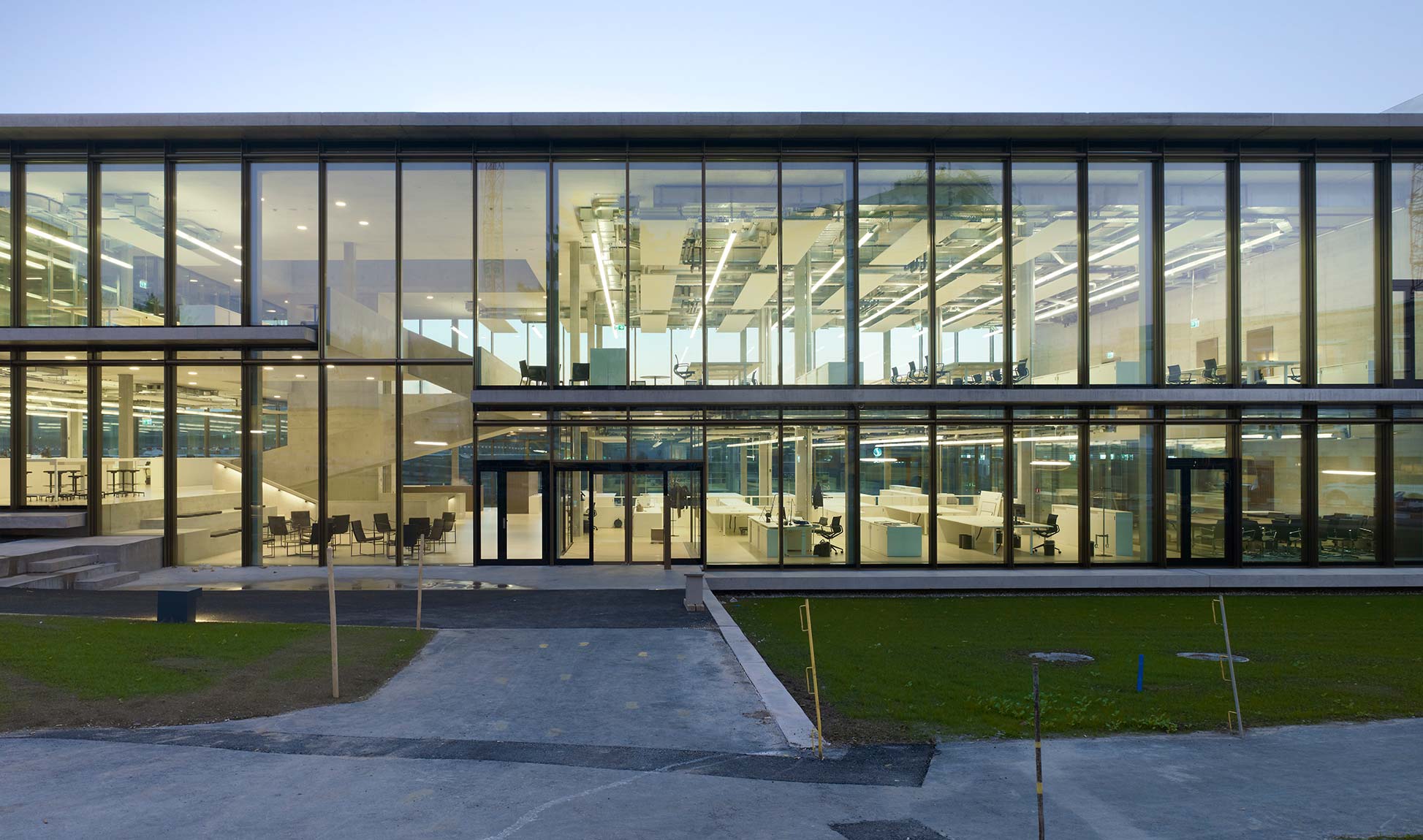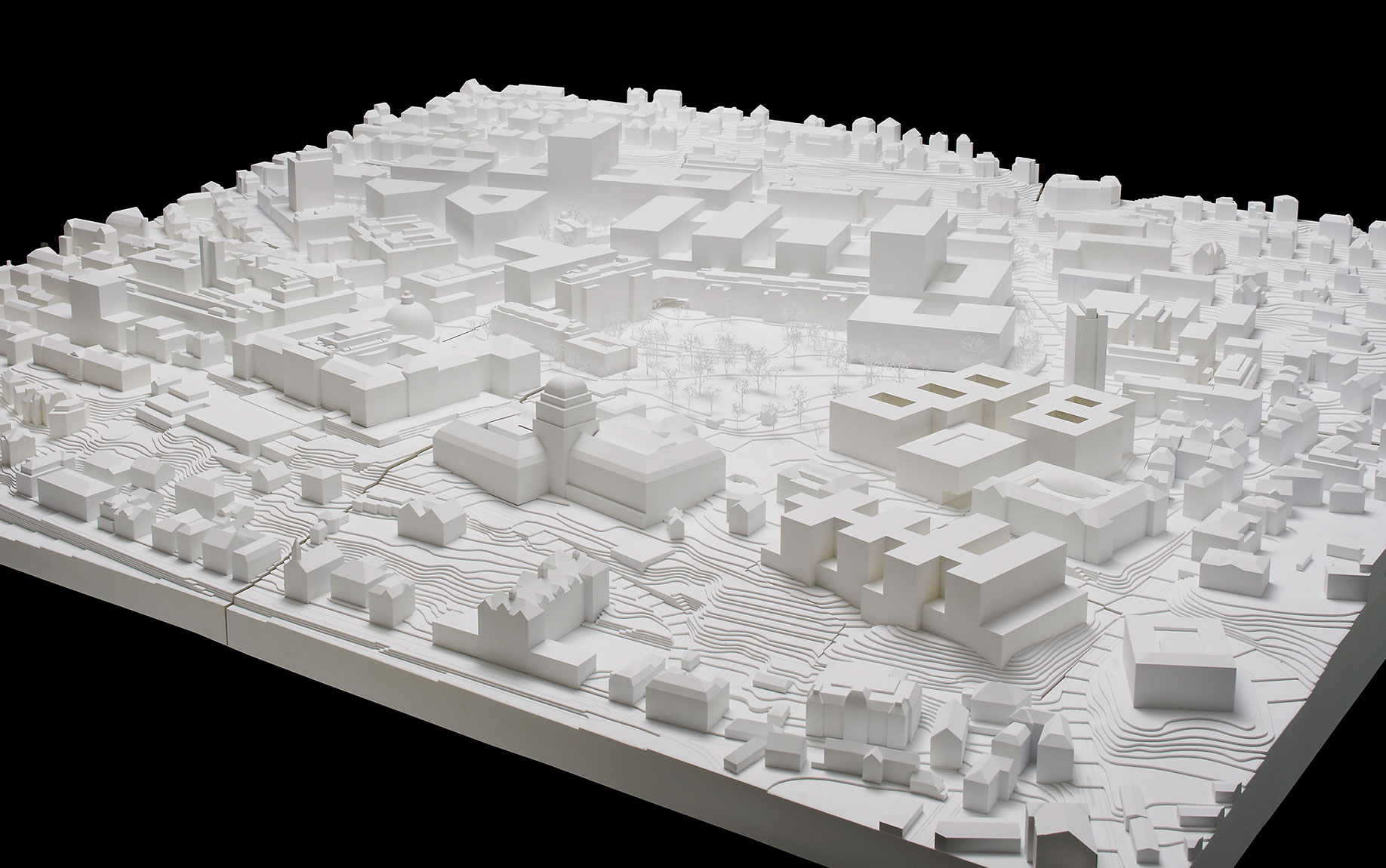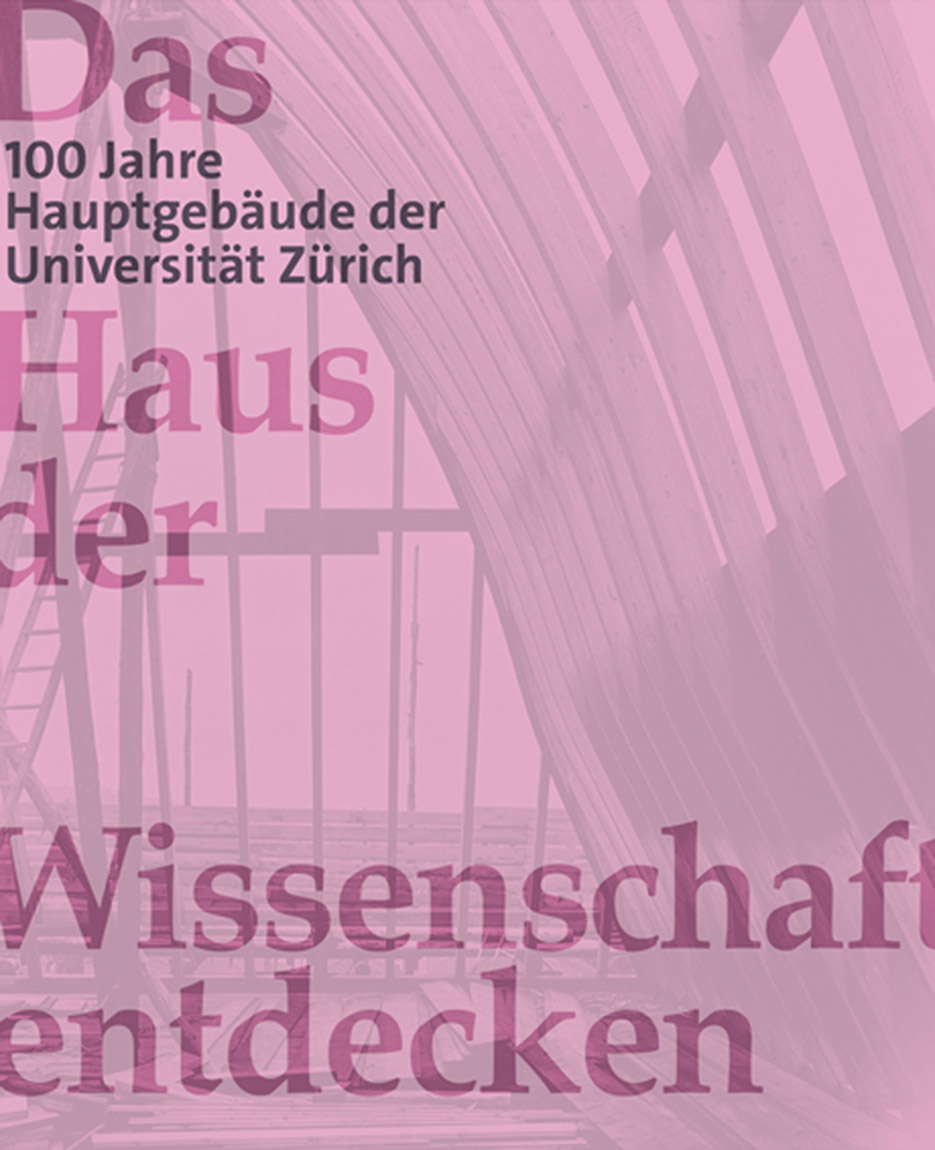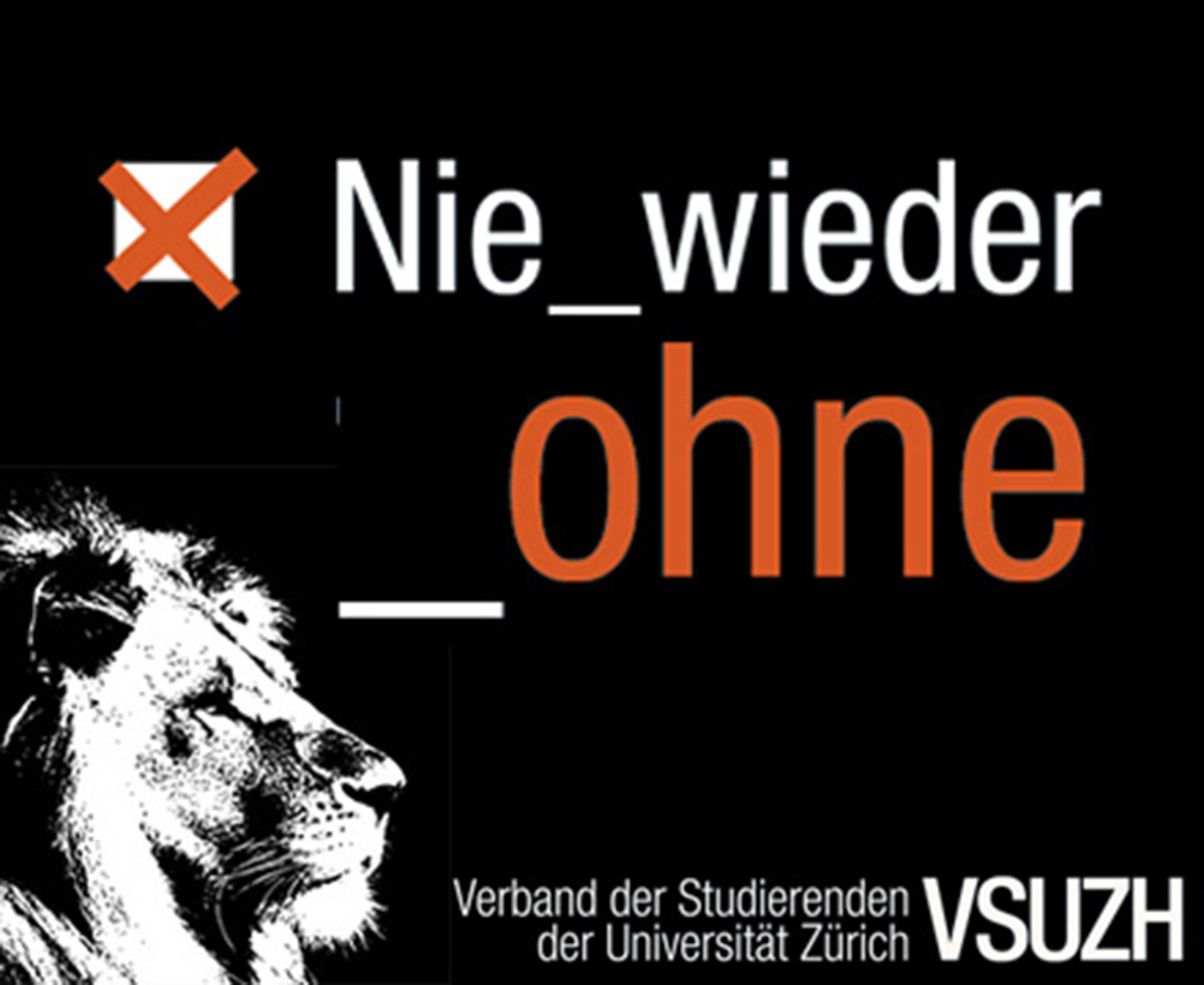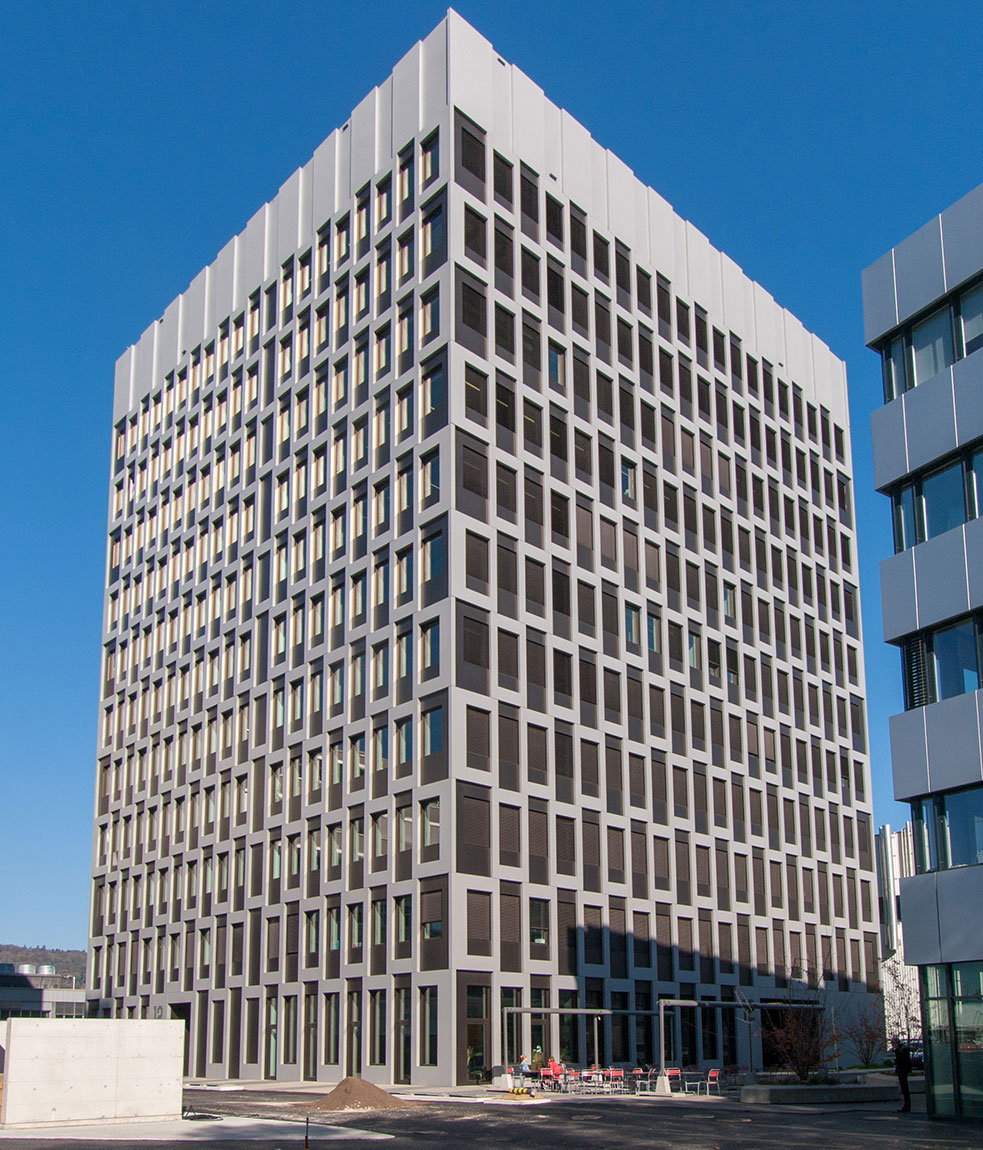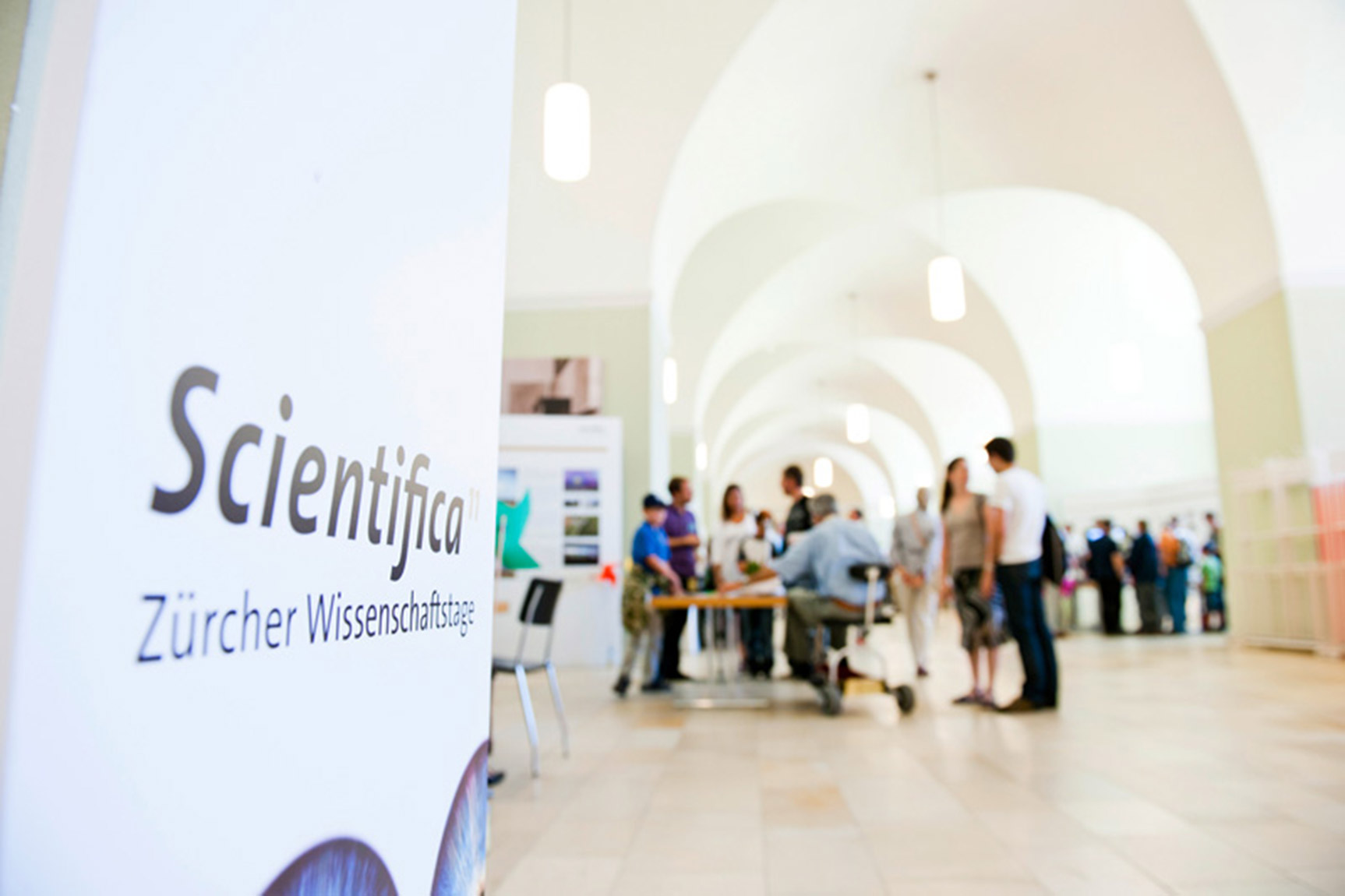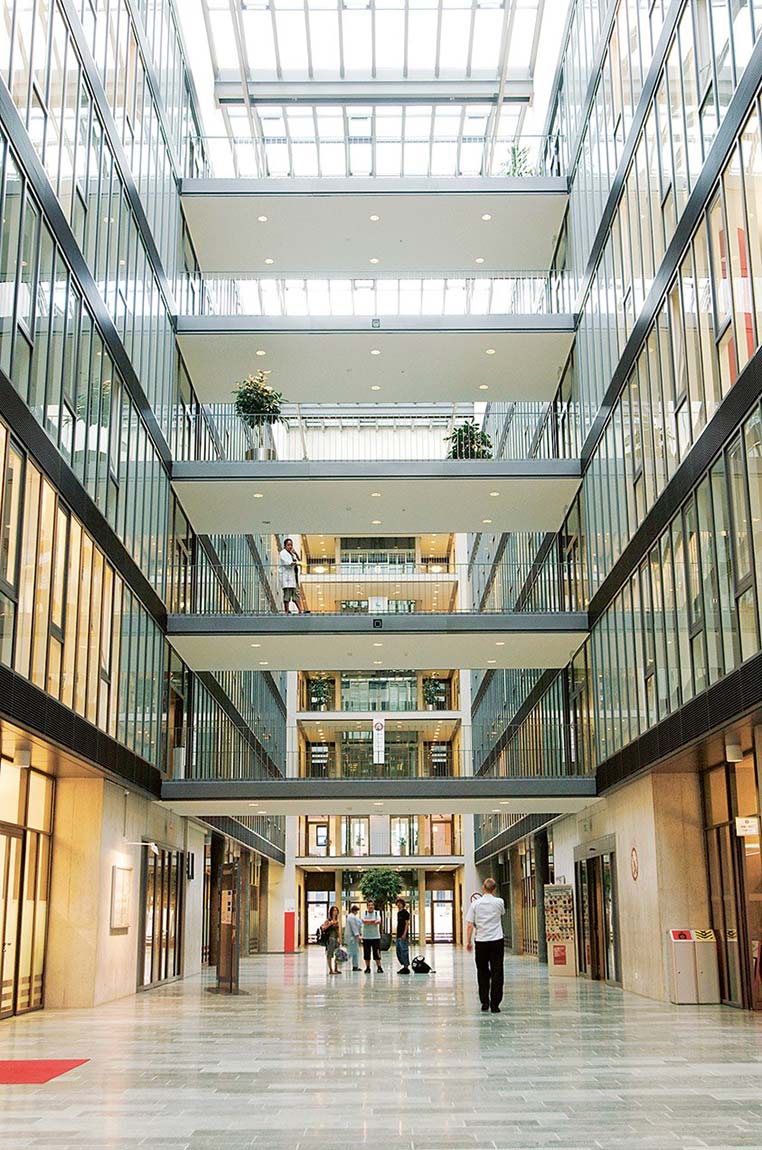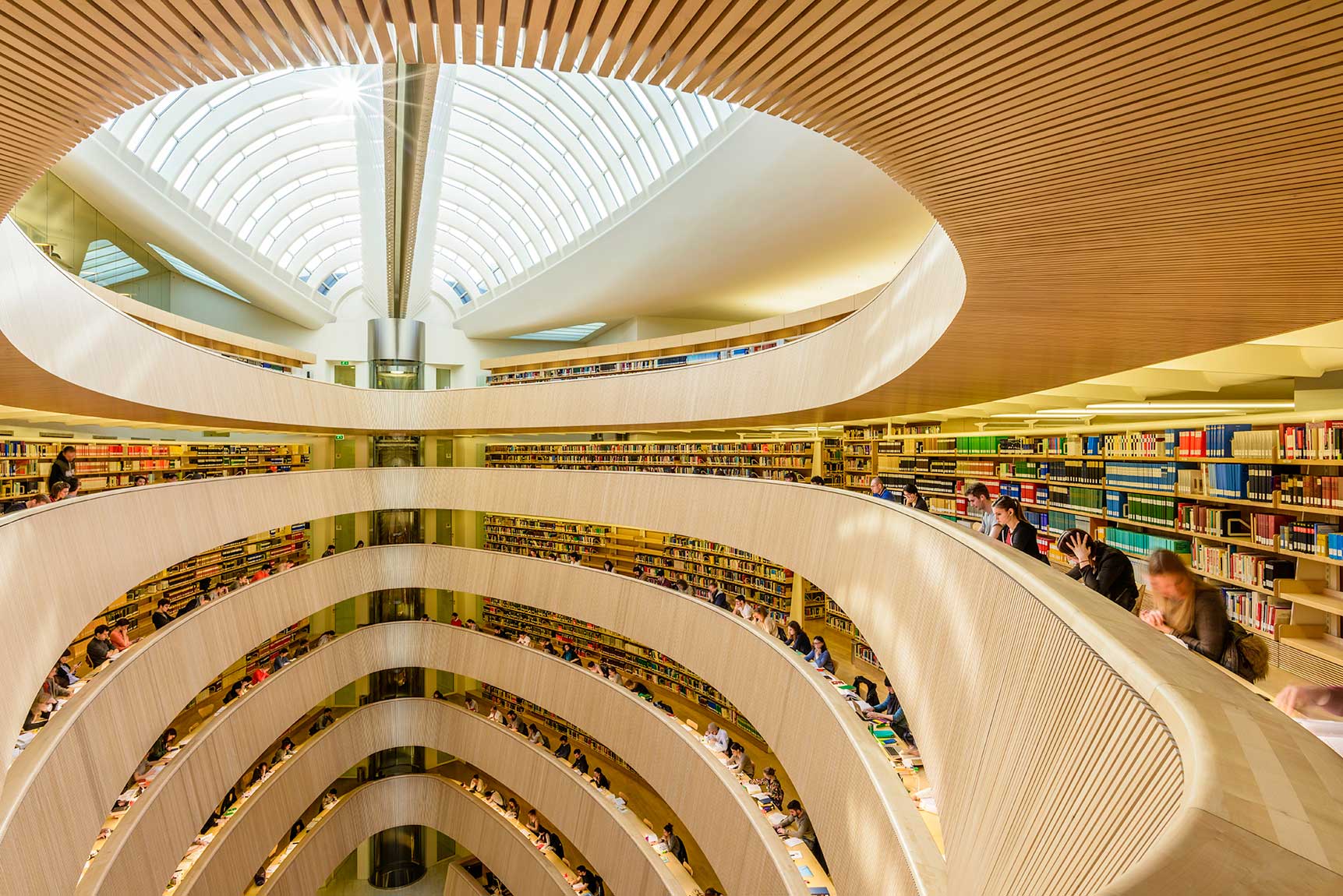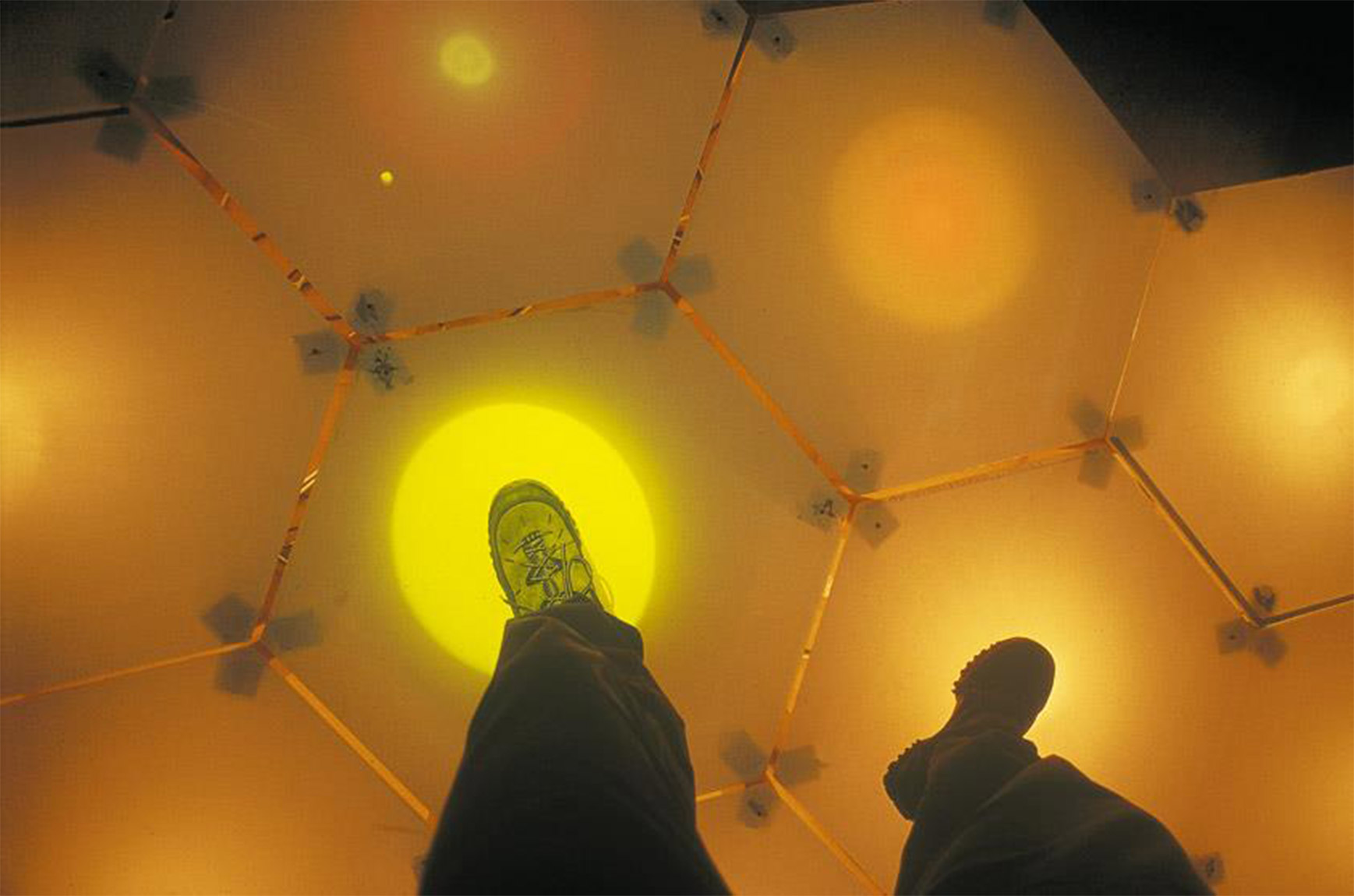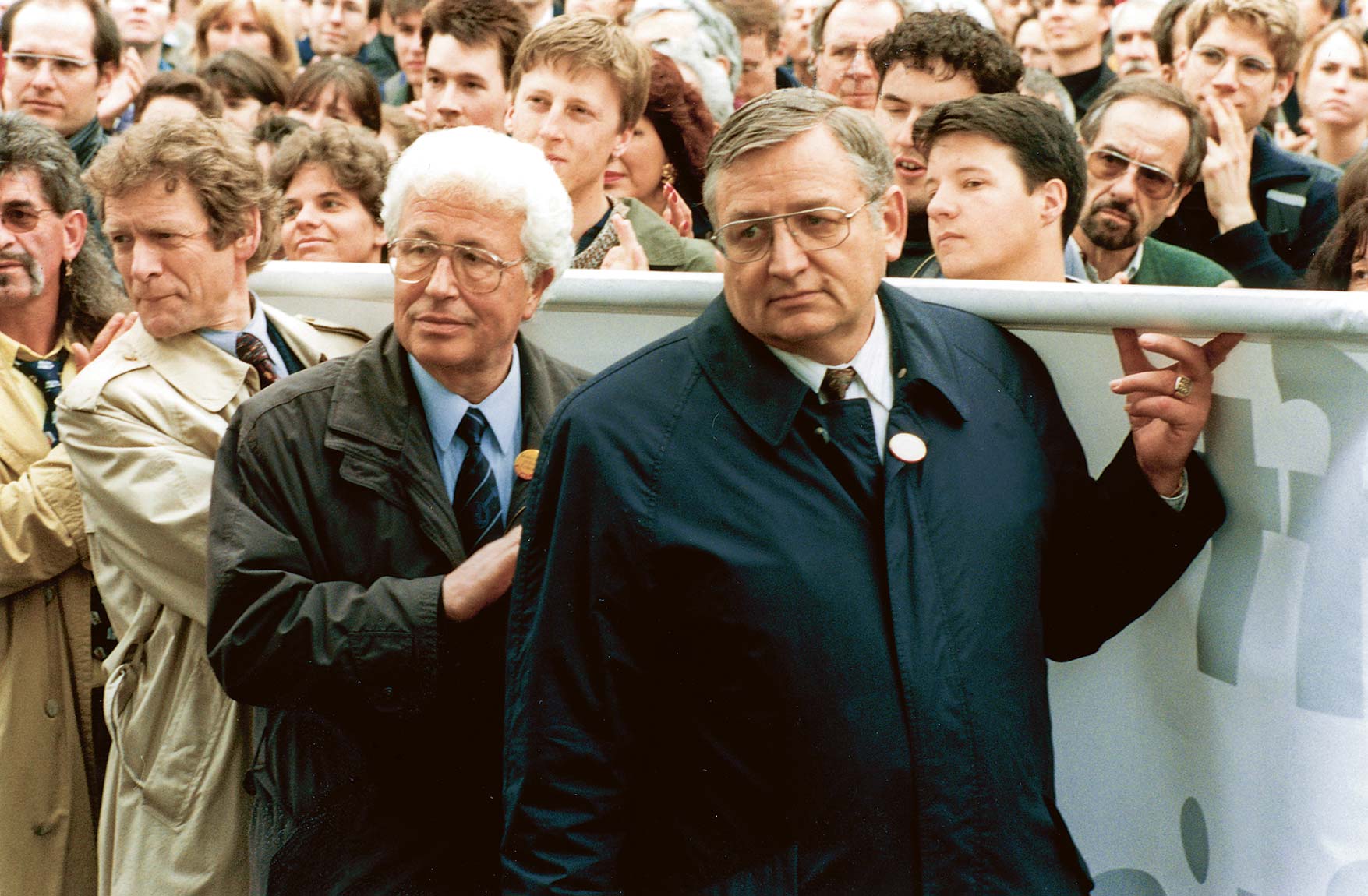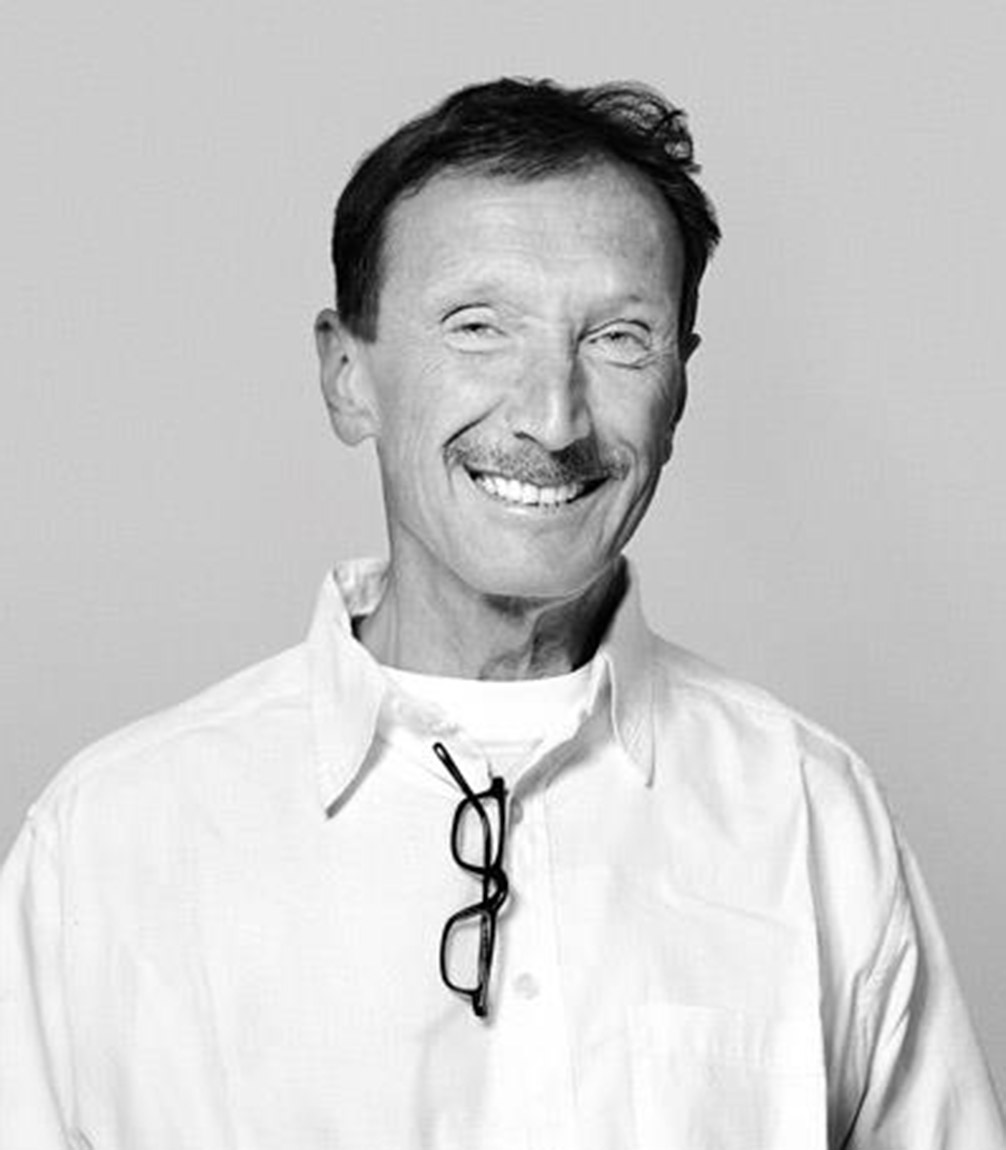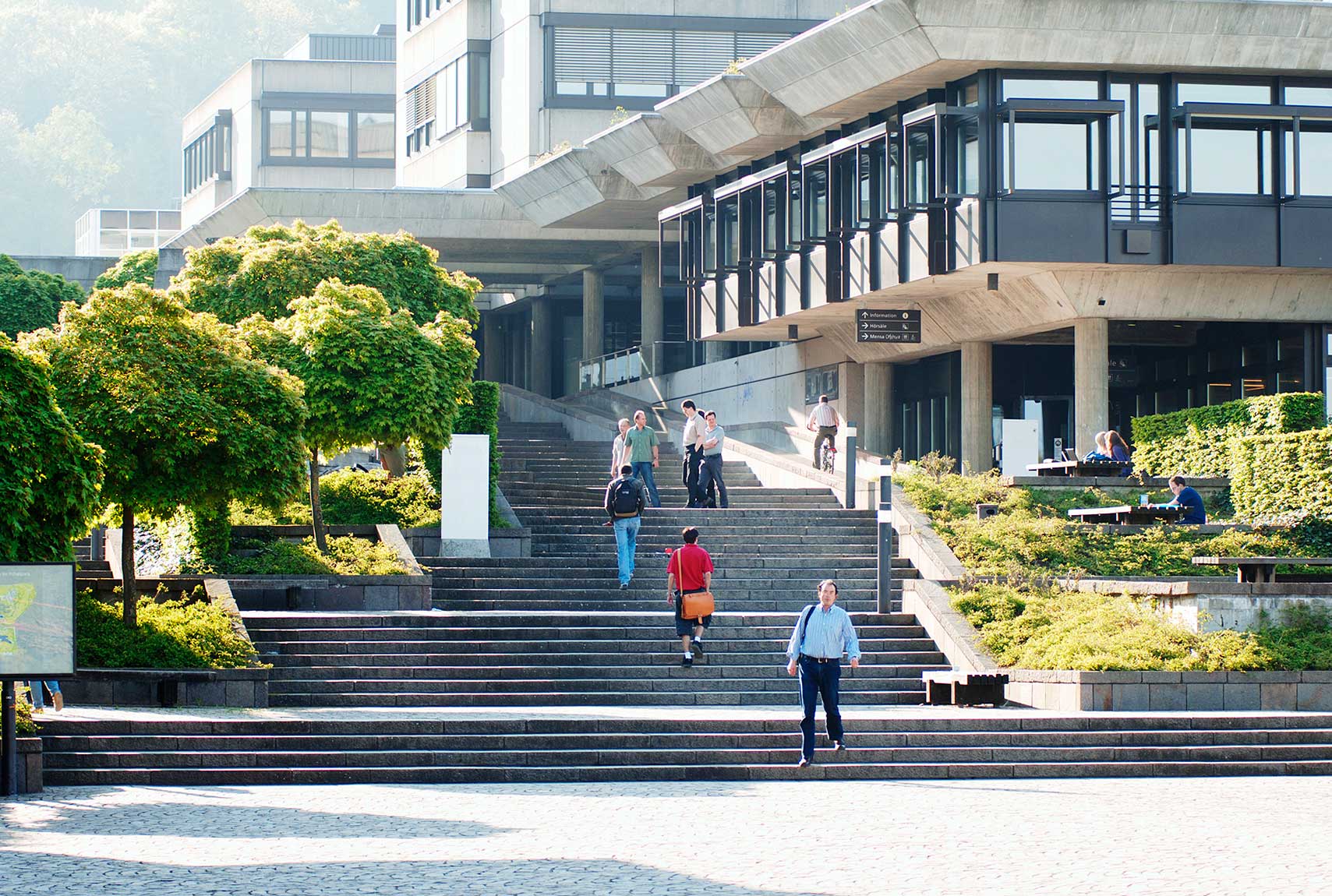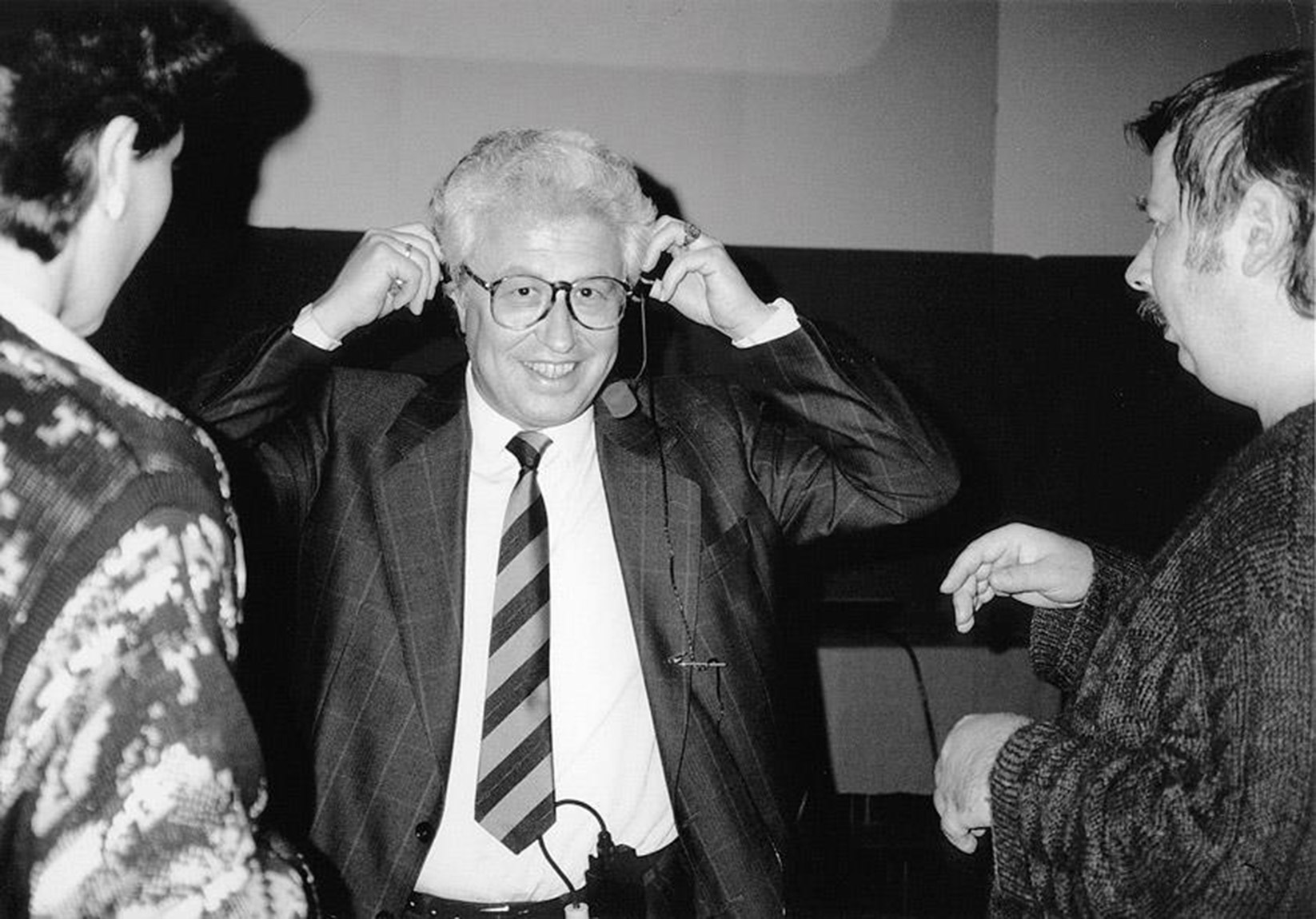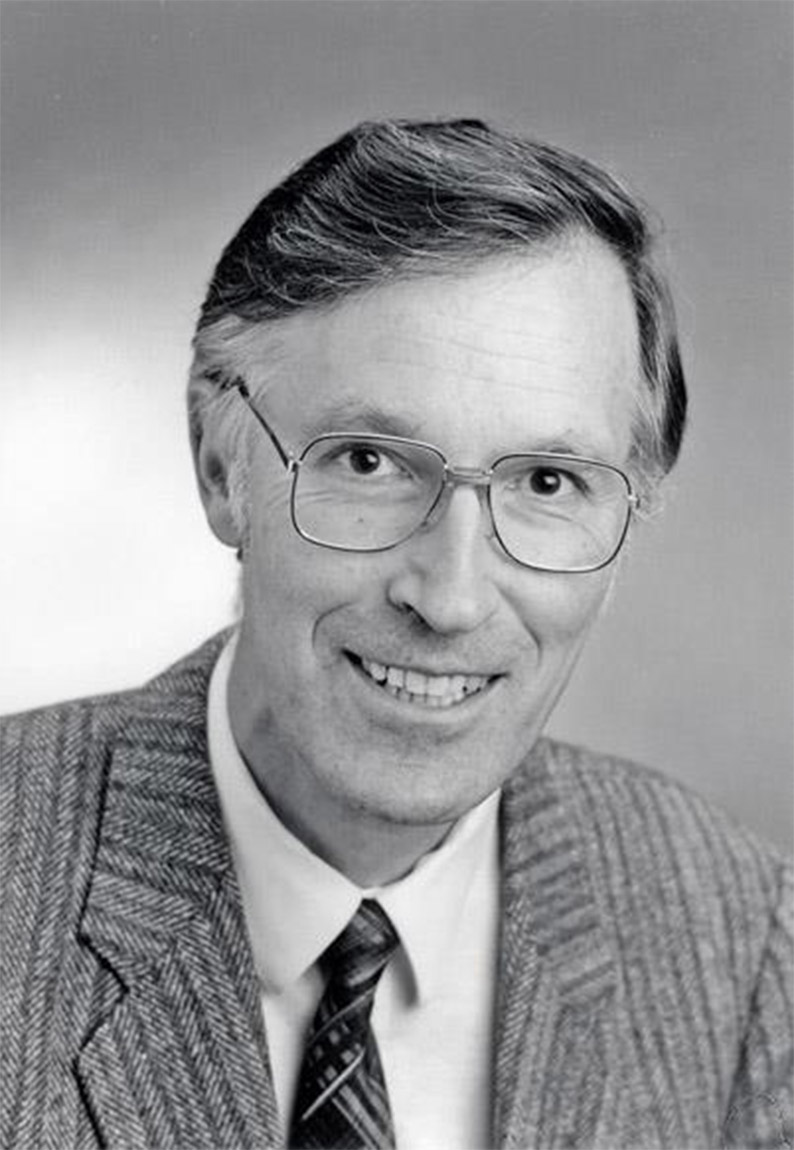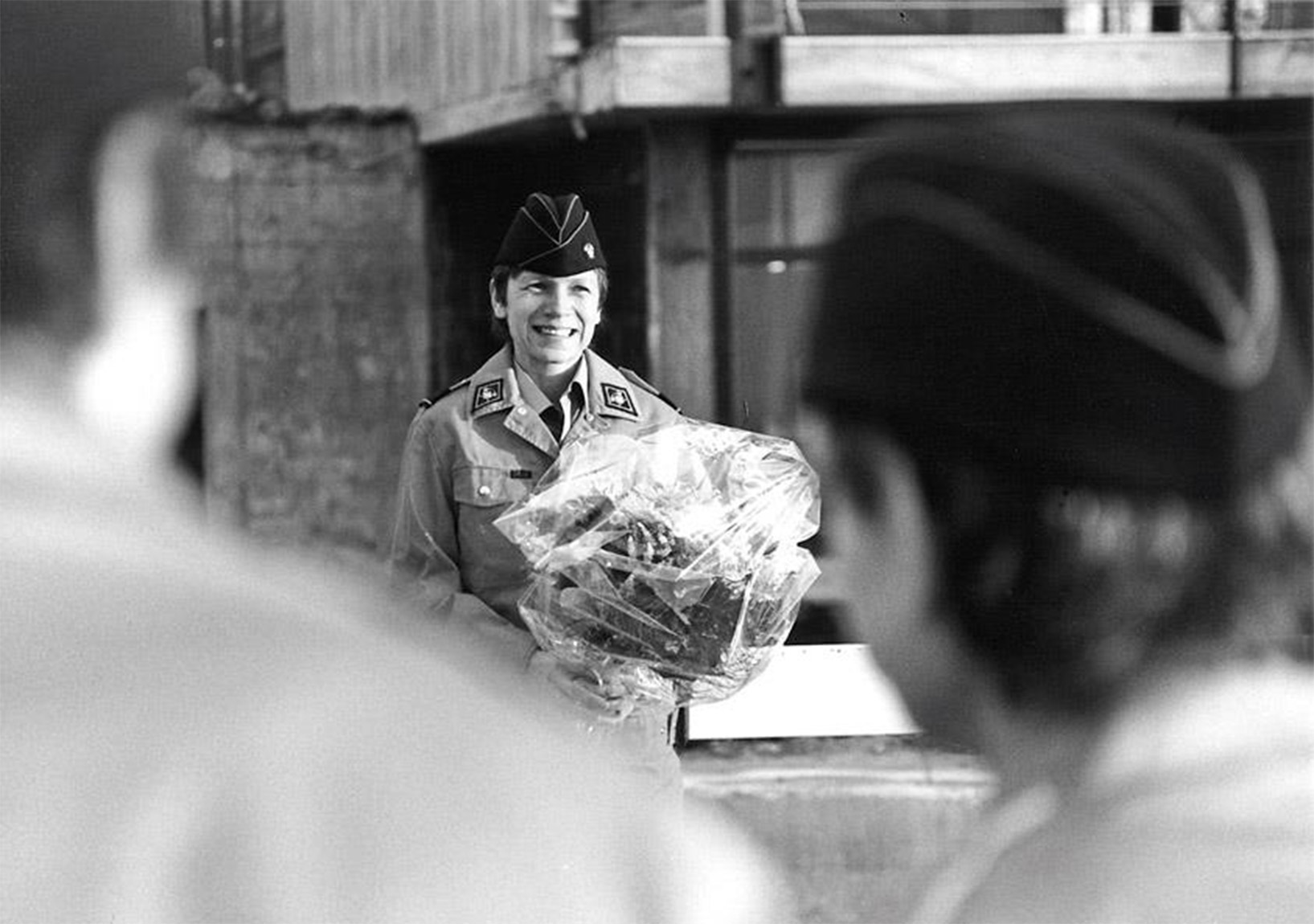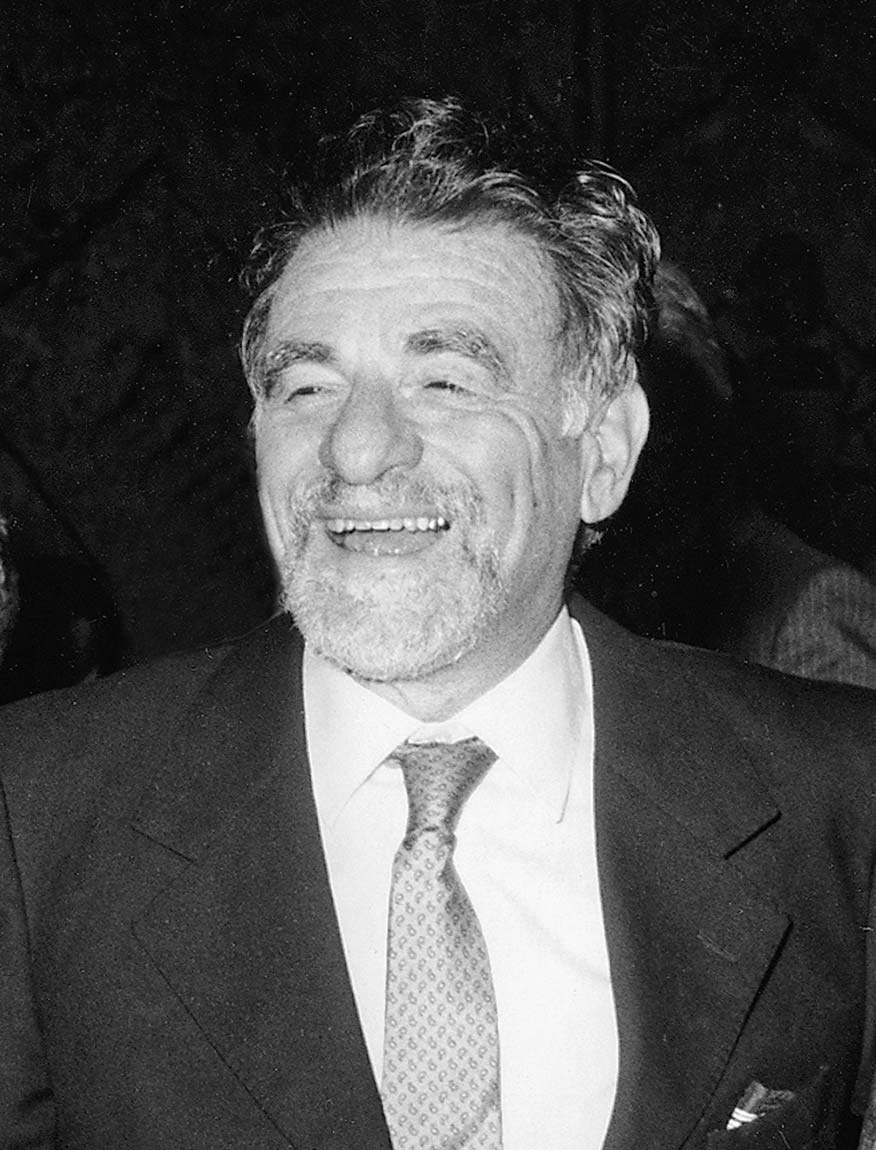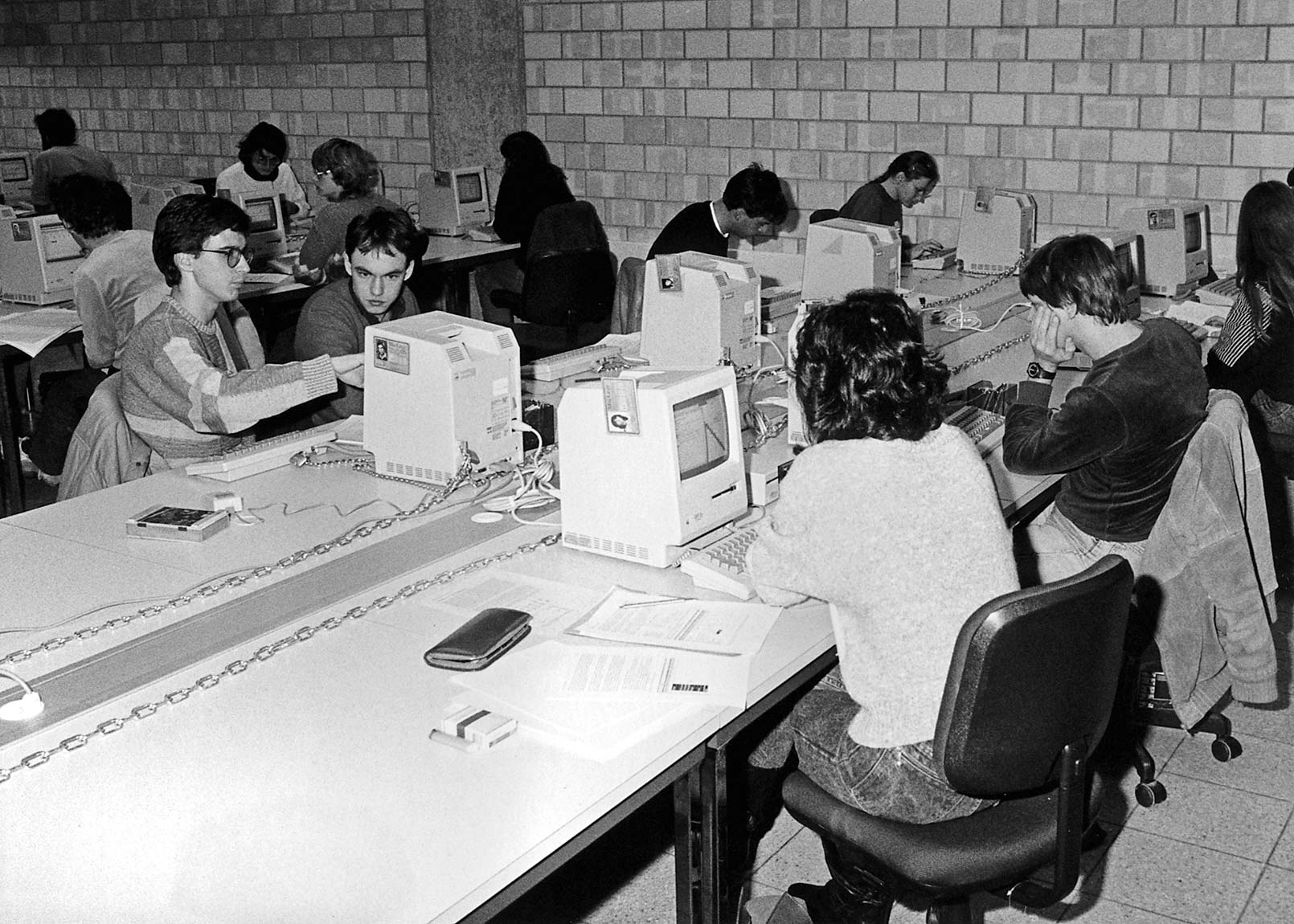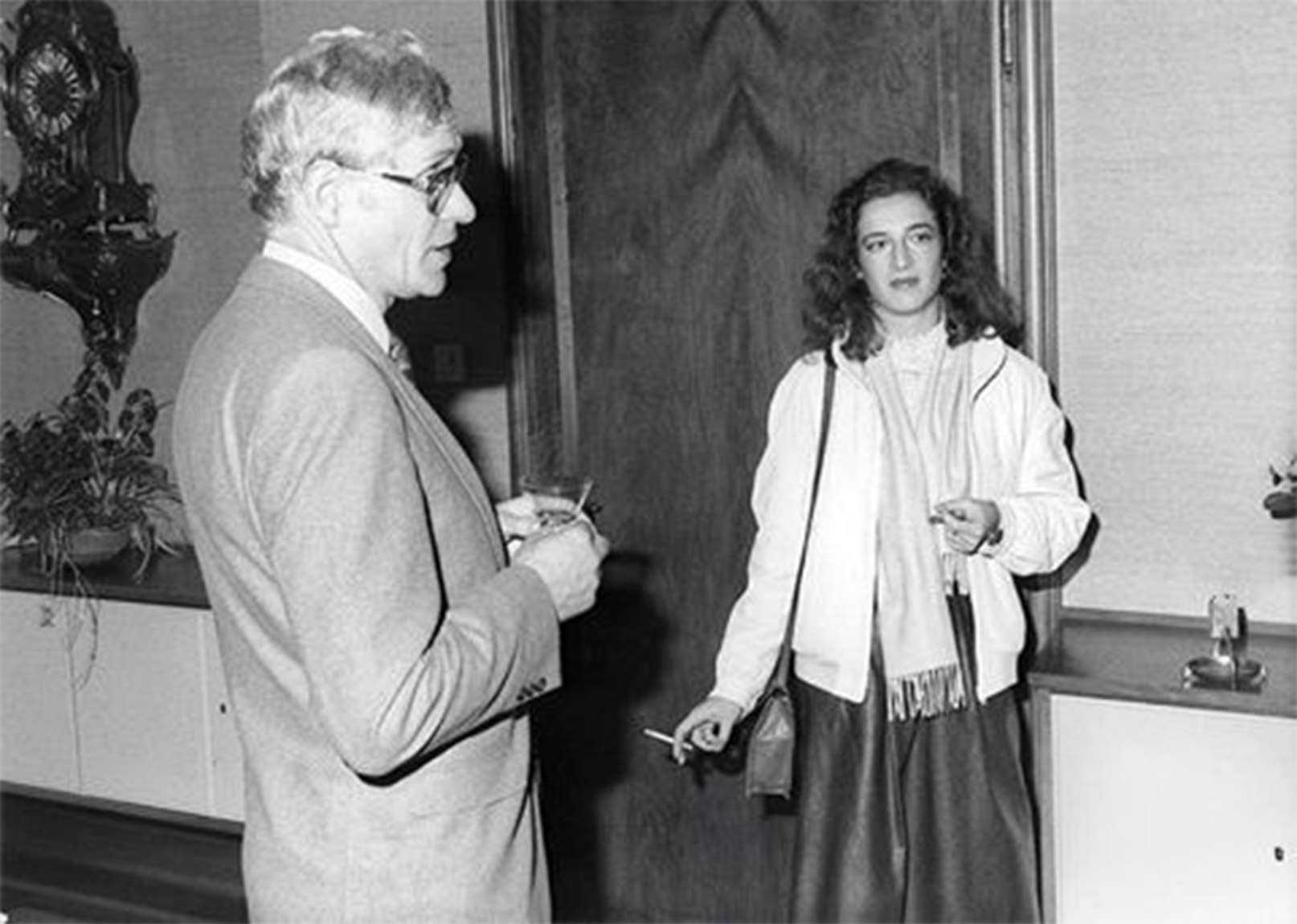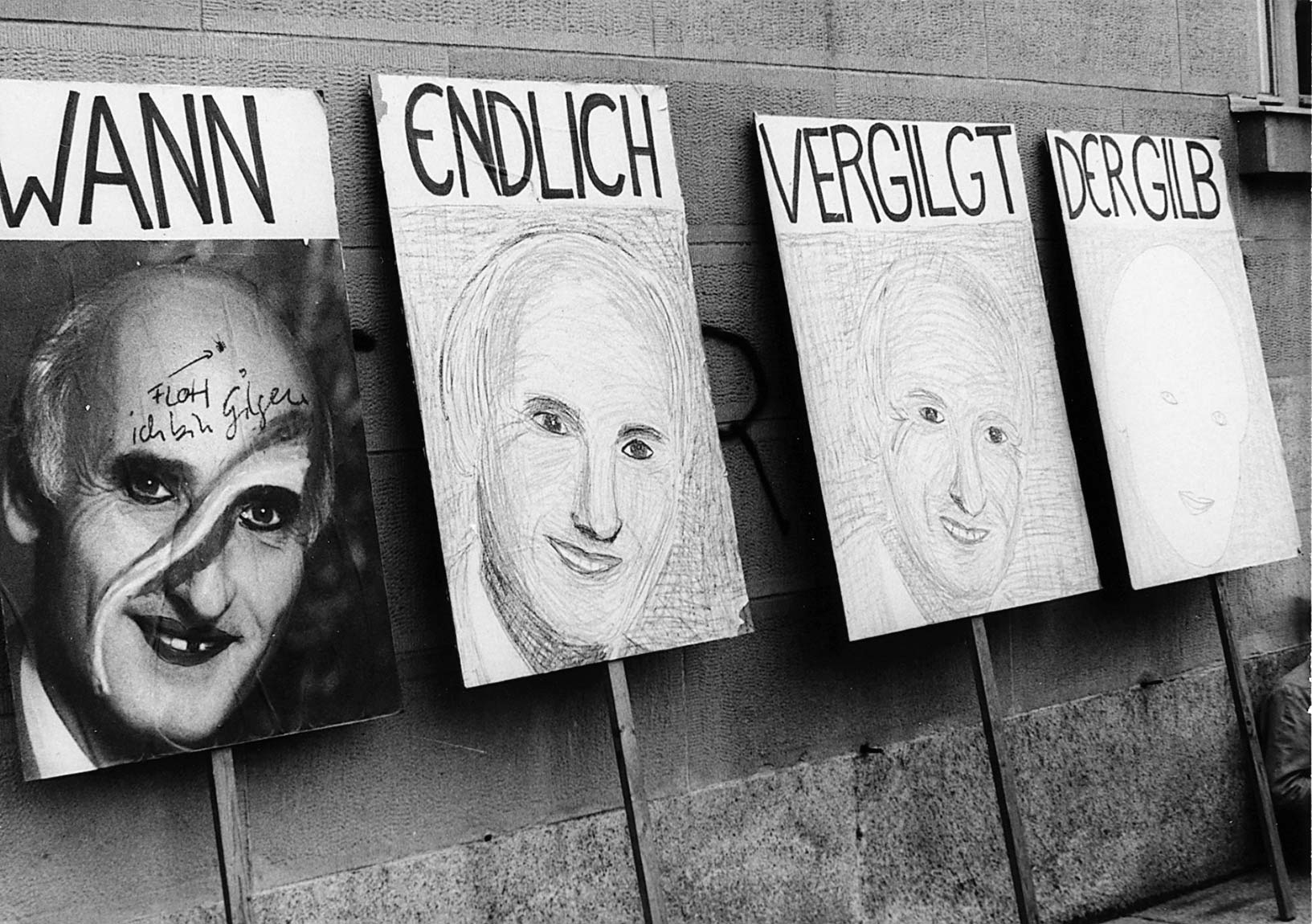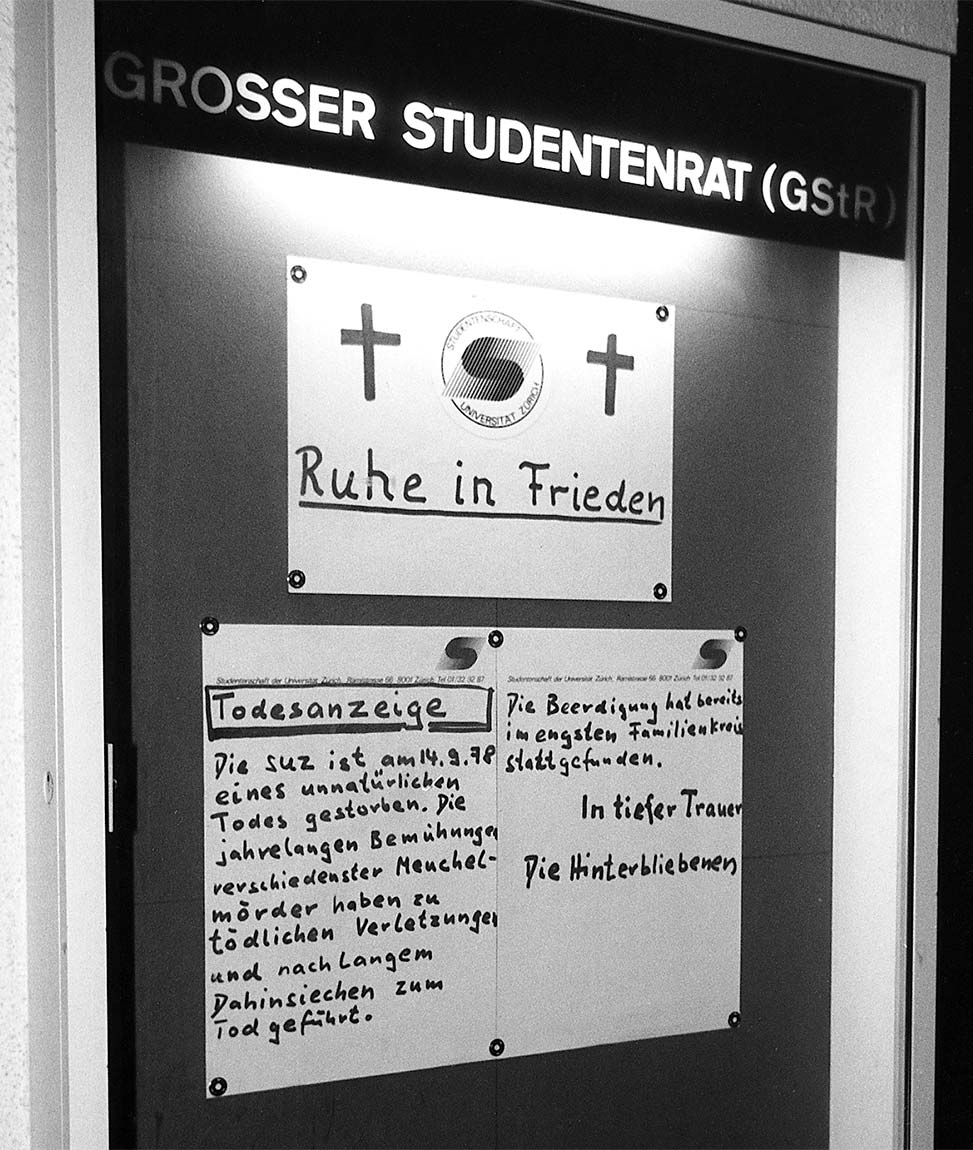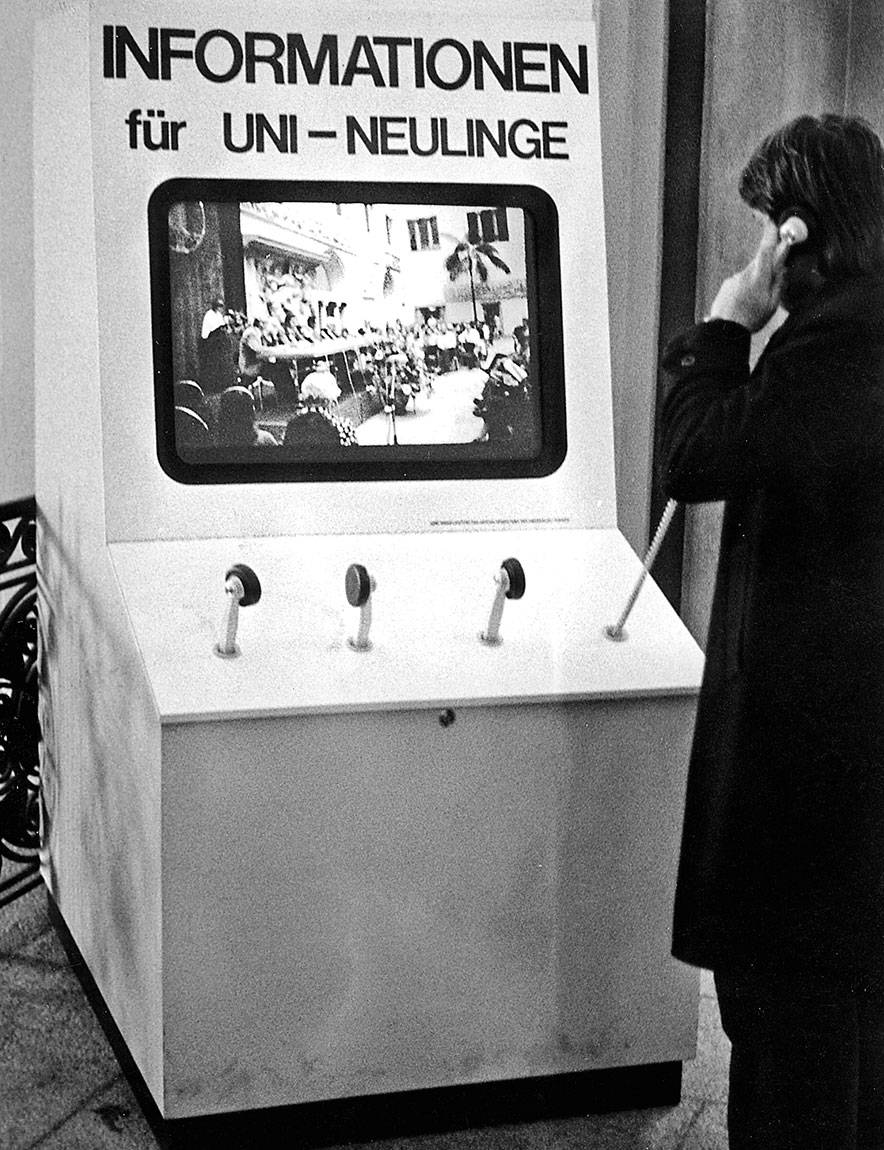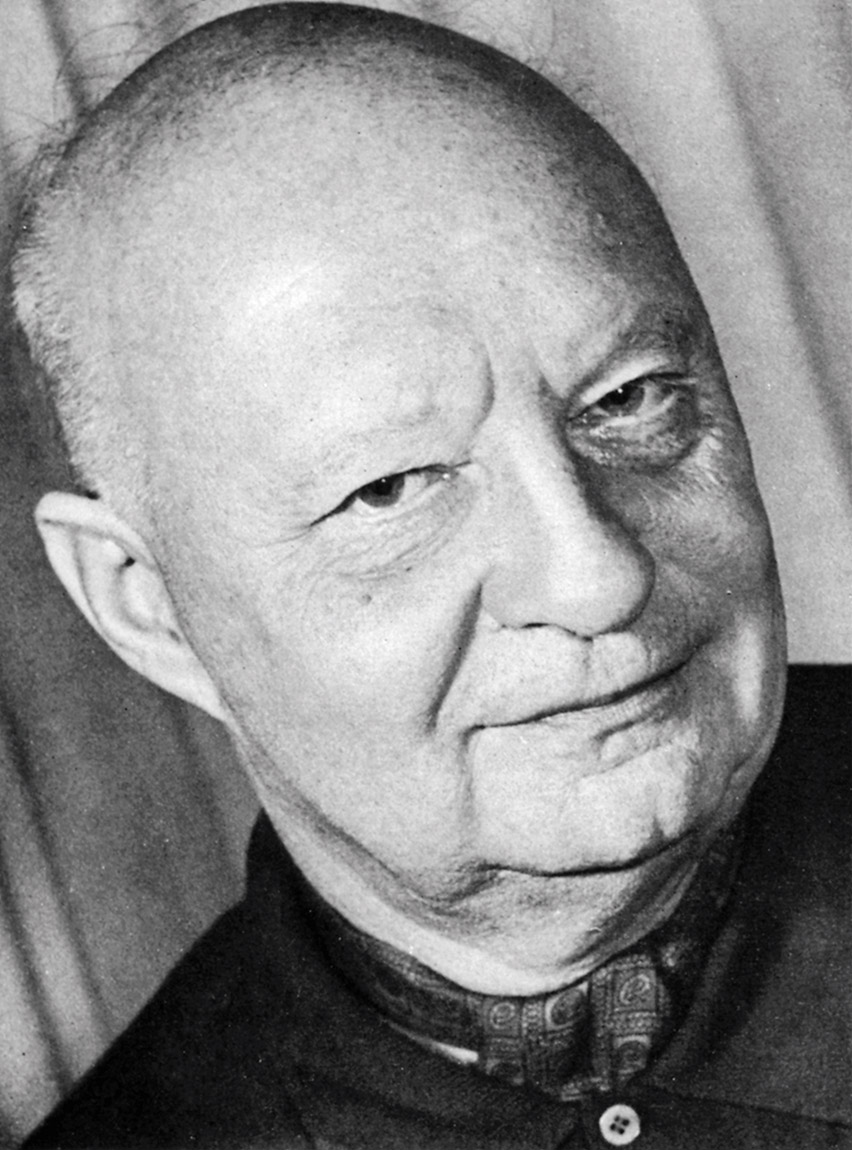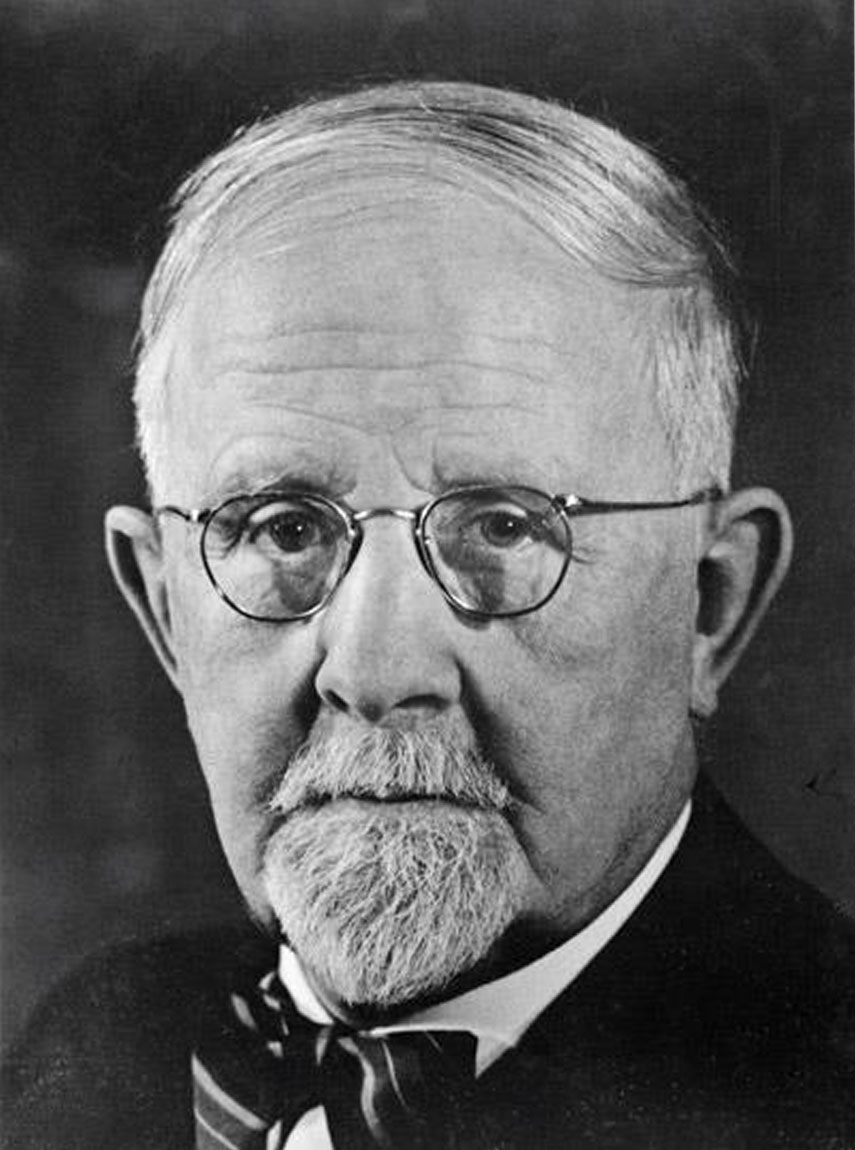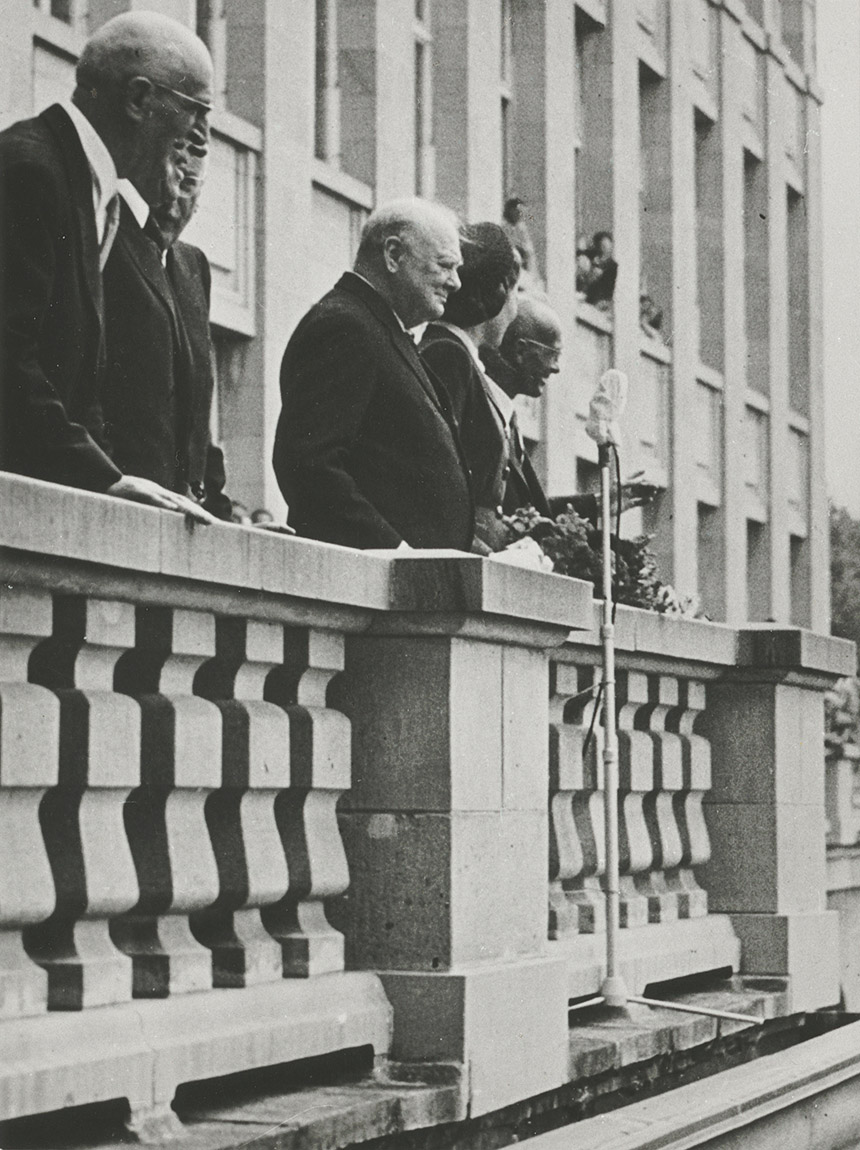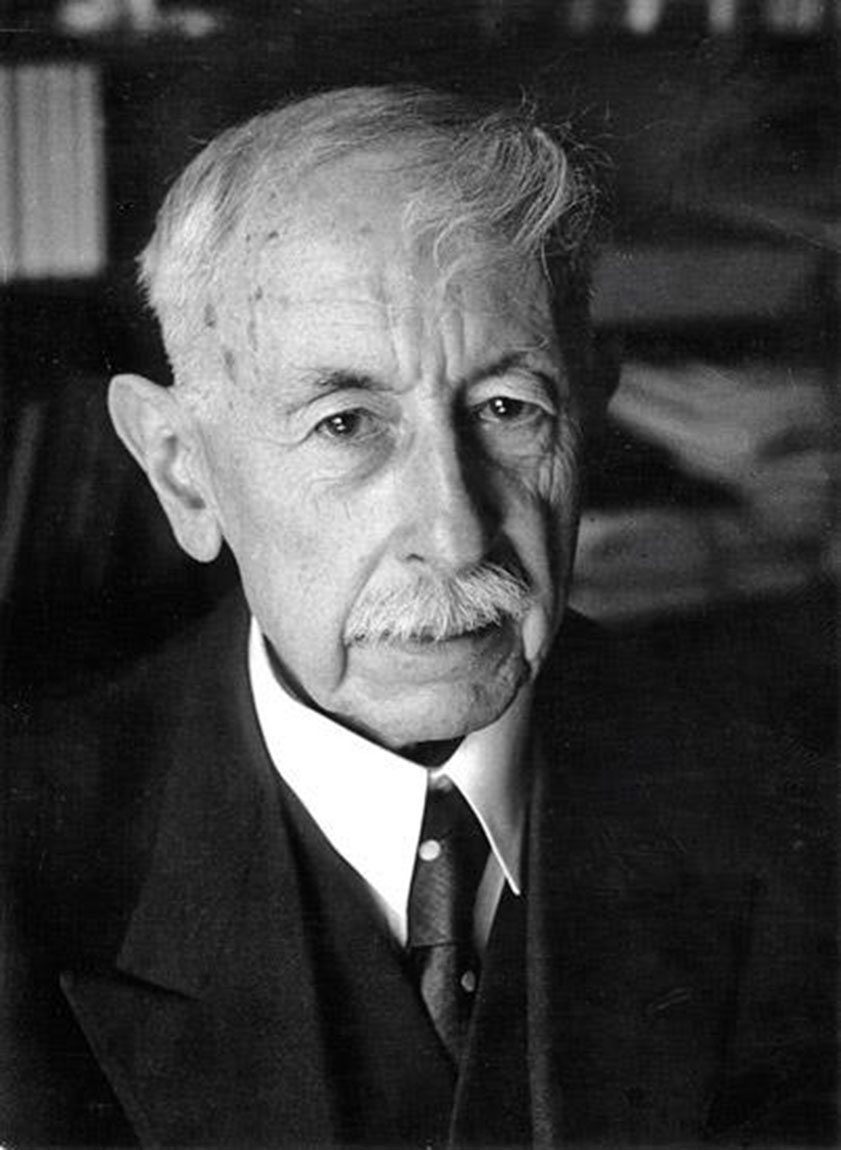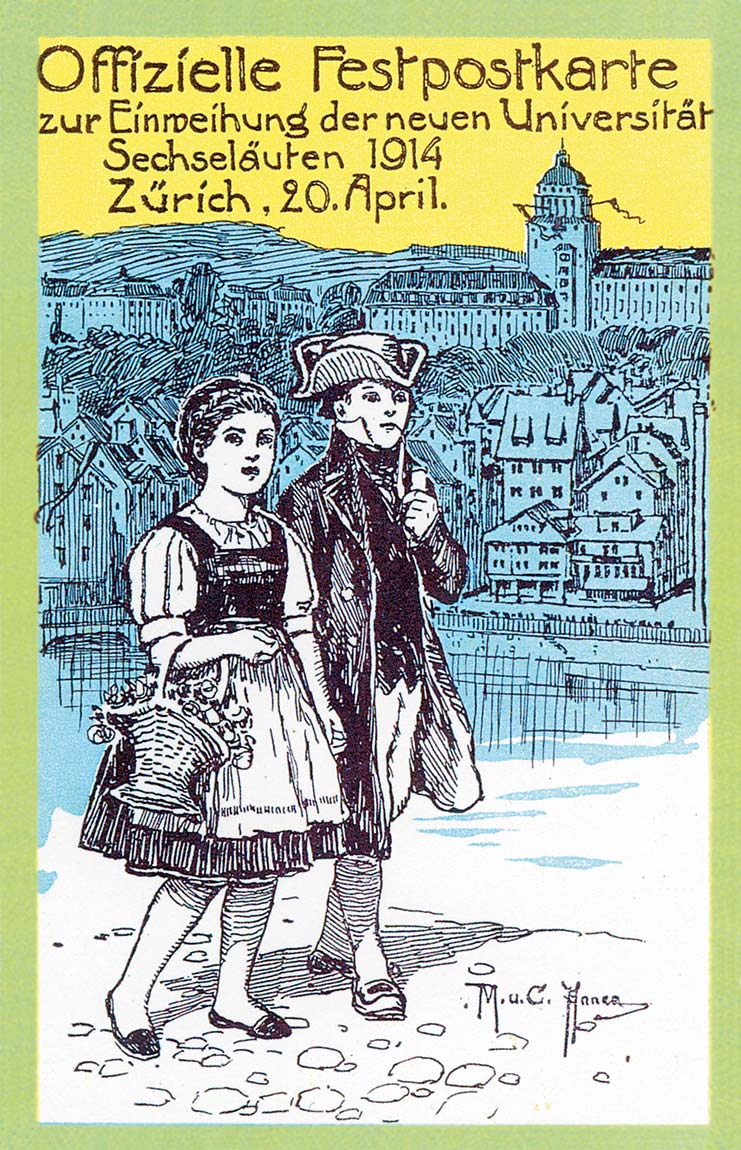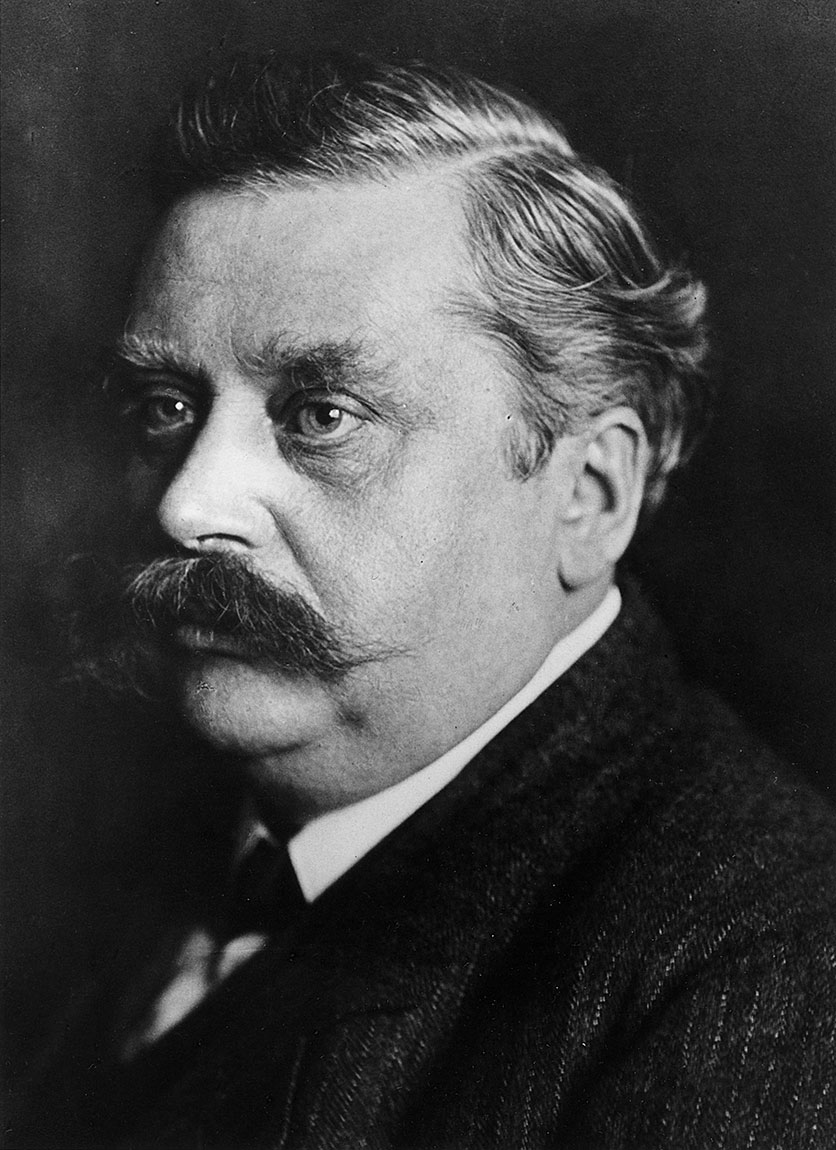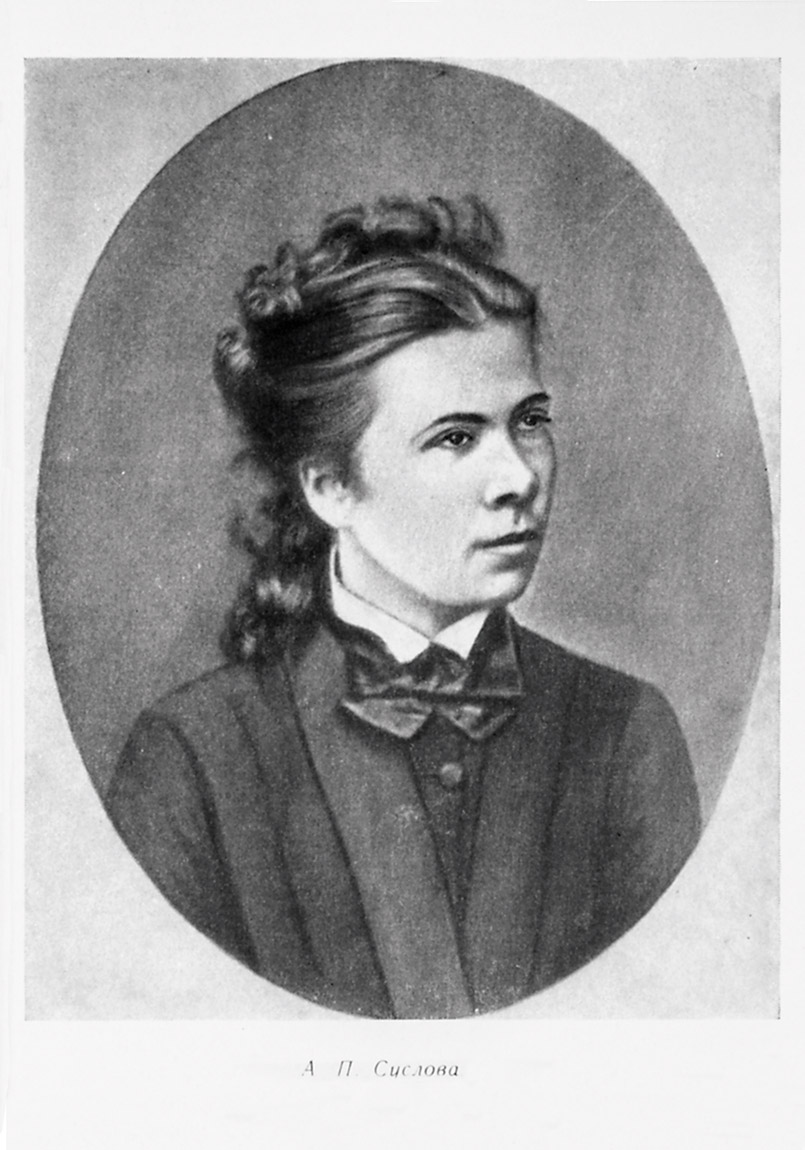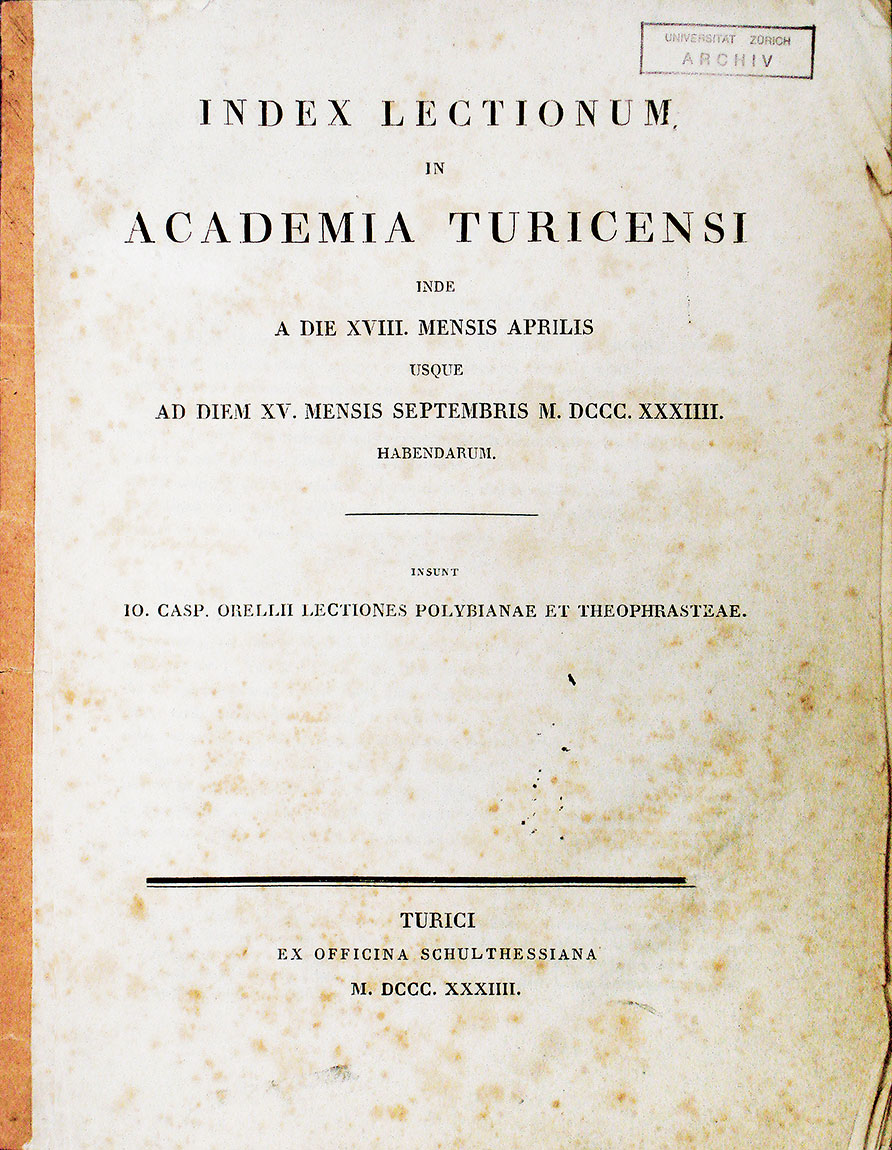History of the University of Zurich
2022
At the beginning of the year, the university’s libraries, which used to be spread out across more than 40 sites, merge to form the University Library Zurich. The new library, in close cooperation with the Zentralbibliothek Zürich, provides users with a comprehensive range of library and media services, including e-media, data services, open access and IT infrastructure.
University Library Zurich
2021
The UZI 5 laboratory building – the university’s first new large building in 20 years – is opened on Irchel Campus. The Department of Chemistry, the Department of Quantitative Biomedicine and the Department of Evolutionary Biology and Environmental Studies move into the eight-story building, which houses numerous labs, specialty labs and centralized research infrastructure such as magnetic resonance spectrometers.
Information about the project UZI5 (in German)
2020
In March, UZH suspends all teaching for the first time in its history due to the Covid-19 pandemic. Teaching activities move online within the shortest possible time, and the number of employees and researchers working on site is reduced to a minimum. The closure of the whole of UZH is unprecedented. Even during the flu pandemic of 1918/1919, the doors of the university had remained open (with the exception of some parts of the Faculty of Medicine).
2018
Extension to the Executive Board of the University. In response to growing challenges, the Executive Board of the University creates two new directorships in the areas of medicine and real estate, which are represented on the Executive Board. At the same time, the tasks of the Vice Presidents are realigned, with greater focus on university-wide duties in the areas of research, teaching and learning, faculty affairs and scientific information. The deans represent the interest of the faculties. In addition, one of the Vice Presidents now assumes the role of Deputy President.
UZH News: "Strengthening the Ability to Act"
2015
Licentiate degree programs phased out. In the spring of 2015, UZH students were given a final opportunity to finish their degree under the former university system. As such, this date marks the official status of the Bologna System, which was introduced in the winter semester 2004/2005.
UZH as an architect. On 14 September 2015, the Parliament of the Canton of Zurich approved an amendment to the University Act with a 168 to 0 vote. The University now has greater decision-making powers regarding real estate management and can act independently in university-related building projects.
UZH News: A Good Day for UZH (in German)
Balgrist Campus. On 4 December 2015, the new center for musculoskeletal research and development opens on the site of the Balgrist University Hospital. The building, designed by architect Daniel Wentzlaff, is characterized by the use of offset stories and an absence of intrusive walls and enclosed areas, creating a sense of complete transparency. Financed without taxpayers’ money, the center provides 7,600 square meters of space for a range of research groups from UZH, ETH, visiting professors and partners in industry.
Website Balgrist Campus
Wyss Zurich. On 7 December 2015, the Wyss Translational Center Zurich was officially opened in the presence of donor Hansjörg Wyss. The research center is run jointly by UZH and ETH Zurich and seeks to quickly and efficiently translate innovative ideas from basic research in regenerative medicine and robotics into practical applications.
Website: Wyss Translational Center Zürich
2014
100-year anniversary of the main building. On 17 April 2014, the centennial celebrations for the University's main building began. Over the course of the year, the landmark building designed by architect Karl Moser is honored with exhibitions, tours, concerts, and a multimedia guide.
Website: Haus der Wissenschaft (in German)
Multimedia guide: Das Haus der Wissenschaft entdecken (in German)
2013
University of Zurich Student Association (VSUZH). 35 years after the last student association was dissolved, and two years after the formation of a new group was approved by the Cantonal Parliament, UZH students had reason to celebrate: With the foundation of the VSUZH, the student body now has a legally and financially independent organization. This enhances their ability to represent the interests and ideas of the students at the operative level.
Website: VSUZH – University of Zurich Student Association (in German)
Bio-Technopark in Schlieren. The UZH campus in Schlieren was opened – the University's fourth campus after City, Irchel, and Oerlikon. UZH's Life Sciences departments are now located in the direct vicinity of numerous important biotech companies.
UZH News: UZH Opens Its Schlieren Campus (in German)
2012
UBS Center of Economics in Society. The Center was established thanks to a generous donation on the occasion of UBS's 150th anniversary. The new institution has the twofold aim of supporting research at the Department of Economics and of promoting knowledge sharing between academia, politics, and society.
Website: UBS Center of Economics in Society
2011
Scientifica. The research fair of UZH and ETH Zurich was held for the first time in 2011. The event quickly became established in the city and now takes place every two years.
Website: Scientifica – Zurich's Research Fair (in German)
University Medicine Zurich. This ambitious undertaking is spearheaded by UZH, ETH Zurich, and the University's five hospitals. The overarching aim is to establish a foundational link between medical care and basic research. As such, University Medicine Zurich unites research and education in the natural sciences, medicine, and technological disciplines.
Website: University Medicine Zurich (in German)
2008
175th anniversary of the University of Zurich. The University of Zurich celebrated its 175th anniversary under the motto "Wissen teilen."
Website: 175th anniversary of the University of Zurich (in German)
2007
Award for excellence in teaching. The Credit Suisse Award for Best Teaching was presented for the first time at the 2007 Dies academicus. The prize is awarded annually in recognition of innovative approaches to teaching.
2006
Recognition of research excellence. In recognition of its standing as one of Europe's leading research universities, the University of Zurich became a member of the internationally renowned League of European Research Universities (LERU).
New management structures. The University introduced its reorganized management structures. The Office of the President's is now responsible for strategic planning, and the three Offices of the Vice President are in charge of medicine and science, arts and social sciences, and law and economics, respectively, as well as the areas of research, educational development, and academic services. The administrative director is responsible for finances, human resources, and infrastructure.
Oerlikon Campus – interim location. After City Campus and Irchel Campus, the University opened its new premises on the new, but provisional Oerlikon Campus.
Zurich, Basel, Aarau. The University of Zurich entered into a cooperation agreement with the University of Basel and, in collaboration with the city of Aarau and the canton of Aargau, the new Center for Democracy was founded in Aarau.
2004
Breathtaking architecture. Following a 15-year project and construction phase, the Library of the Institute of Law was opened in November 2004. Designed by Spanish architect Santiago Calatrava, the University's Law Library houses a collection of approximately 170,000 volumes and 700 journals/publication series.
2002
"Ada" at the Expo ’02. The University and ETH Zurich joined forces for the National Exhibition 2002. The two universities introduced the interactive project "Ada – the intelligent space" at the Arteplage Neuchatel.
2001
Cooperation agreement with ETH Zurich.The University of Zurich and ETH Zurich signed their first-ever official cooperation agreement.
UZH at Zurich's Main Station. The newly established Festival Science et Cité was staged at Zurich's Main Station.
2000
Enhancing quality assurance. An independent evaluation unit assessed the University's organizational units to ensure top quality at all levels. In the future, assessment processes will be repeated in six year cycles.
1999
Unitectra technology transfer. Unitectra, a limited company set up by UZH and the University of Bern is the successor company of Biotectra, which was founded in 1996. Unitectra was created to promote the transfer of technology from the University to industry and, in particular, to help establish spin-off companies.
1998
The University of Zurich gains political autonomy. On 15 March 1998, the voters of the Canton of Zurich approved the new University Law and gave the University the status of an autonomous legal entity. As a result, the University is able to manage its finances independently within a global budget and to organize itself as it sees fit. The new governing body of the University is the Board of the University, which is made up of leading figures from academia, culture, business, and politics.
Joint centers of competence. The University of Zurich initiated steps to further develop its collaboration with other universities and ETH Zurich: Centers of competence for neuroscience, plant science, and international studies were created. Research focusing on banking and finance – a project in cooperation with five Zurich banks and insurance companies – commences.
Clear stand on genetic engineering. The University of Zurich and its representatives, in particular Director of Education Ernst Buschor, UZH President Hans Heinrich Schmid, and Nobel Prize laureate Rolf Zinkernagel, took a public stance against the so-called "genetic protection initiative." The initiative was rejected by the Swiss voters on 7 July.
1996
Moving toward political autonomy. The cantonal government handed over responsibility to the University for: University policy, human resources, pay, and financing. A working committee of the University and ETH was formed to initiate new forms of collaboration.
Opposition to cost-cutting measures. The introduction of general compulsory matriculation resulted in a higher number of enrolled students. At the end of November, students organized the Lux Parade to demonstrate against the Canton's cost-cutting measures.
Nobel Prize awarded to Rolf Zinkernagel. Rolf M. Zinkernagel, professor of experimental immunology, was awarded the Nobel Prize in Medicine for his discoveries concerning the specificity of the cell mediated immune defense.
1995
Numerus clausus abolished. The numerus clausus for medical studies, imposed in 1994 by the Zurich Cantonal Government, was abolished by the Federal Supreme Court on the grounds that the measure lacks a legal basis.
Private funding. Due to stringent cost-cutting measures, the Universtiy and authorities sought new sources of funding.
Right to appoint teaching staff. The University was granted the authority to appoint teaching staff on its own behalf without the interference of the Canton – an initial move toward autonomy.
1994
Stricter regulations. Regulations governing secondary employment of UZH professors and the use of inventions were introduced.
1993
Project uni2000. The goal of the reform project uni2000, initiated by UZH President Hans Heinrich Schmid: Dispensing with the old model of a university administered by the Canton and transforming UZH into an independent entity constituted under public law. The project included a global budget for all University business to cover expenses. These measures were introduced to ensure that UZH can conduct its core activities in education, research, and related services.
1992
Law and economics split. The Faculty of Law and Political Science was divided into two faculties: The Faculty of Law and the Faculty of Business, Economics and Informatics. The increasing importance of economics already prompted the creation of a department of law and a department of economics in the 19th century.
Relations with Eastern Europe. The University of Zurich participated in the European mobility program for students, as participation in European research programs was gaining significance. Special partnerships were developed with East European universities and a week-long event initiated.
Larger role for the federal government. The Swiss federal government began assuming more responsibility for the development and coordination of higher education institutions. The University of Zurich and the Paul Scherrer Institute jointly created the Institute of Medical Radiobiology. The ETH Zurich and the University agreed to found an Institute of Neuroinformatics. A less positive development: The growing gulf between expectations and available funds available, with the University set to receive less federal funding. Priority is given to research priorities and specific programs.
Decrease in student numbers. A drop in student numbers as the baby boom generation of the 1980s completed their studies. Over the coming years the number of students would continue to drop. The main reasons: Higher semester fees and the abolition of reduced health insurance premiums for students.
1991
A voice in decisions. Privatdozents, teaching and research assistants, and students were granted the right of co-determination at faculty assemblies for the appointment of professors.
University at "Eureka." The University took part in the national research exhibition "Eureka" at Zurich Allmend, showing a cross section of its work from anatomy all the way to economy. A fully functioning lab was part of the University's presentation.
1990
Walter Burkert awarded the Balzan Price. Walter Burkert, long-time Professor of Classical Philology at the University of Zurich, received the Balzan Price.
1988
New trends in subject choice. Of the approximately 20,000 students at the University of Zurich, a disproportionately high number chose the subjects economics, business administration, psychology, or education.
Woman at the helm. Regula Herter became the first Chief Fire Officer of the University's fire brigade.
1987
"No" to new student body. The Government Council of the Canton of Zurich rejected a proposal to once again create a student body constituted according to public law.
Nobel Prize awarded to K. Alex Müller. K. Alex Müller, Professor of Solid State Physics at the University of Zurich, received the Nobel Prize for his discovery of high-temperature superconductivity.
President in rickshaw. As part of the exhibitions surrounding the large-scale Swiss event "India in Switzerland" at the Ethnographic Museum of the University of Zurich the President, Konrad Akert, went for a ride in a rickshaw.
1985
IT boom. Student numbers in the field of information technology in an upward trend.
1984
Strengthening the Office of the Vice President. The University's new management structure was introduced: The Office of the President as a full-time department, a Vice President for Teaching and Research, and a Vice President for Planning, Finance and Real Estate Management. A year later, the administrative director would be appointed. Over the following years, the scope of responsibility of the Offices of the Vice Presidents would undergo frequent revision.
"Dies" at Irchel Campus. The Dies academicus was held in the auditorium at Irchel Campus for the first time. Previously, the foundation ceremony was held in the University's main building, except for 1983, when, on the occasion of UZH's 150th anniversary, it was held in Grossmunster.
University at "Phänomena." From May to October the University took part in the popular science exhibition "Phänomena" at Zurichhorn.
1983
Developments at Irchel Campus, part 2. The University of Zurich – at the time with some 15,000 students – celebrated its 150th anniversary. During the anniversary year, the second stage of Irchel Campus was completed.
1982
Improved management structures. On 25 April, the voters of Zurich approved a revised education law. The University vastly improved its management structure by appointing a full-time president (four-year term) and two part-time vice presidents (two-year term).
1980
Criticism of Cantonal Government Councillor Gilgen. The Opera House riot shook Zurich. In the summer of youth riots, the protests also extended to the University due to a ban on a video screening of the Opera House riots, filmed by the Institute of Social Anthropology. The events exposed shortcomings in the University's governing bodies and the administrative procedures between the Cantonal Education Department, the Department of Health, the President's Office, faculties, and institutes.
1979
Developments at Irchel Campus, part 1. The first buildings at the new Irchel Campus officially opened their doors.
1978
End of the student body. The student body as a public legal entity with compulsory membership was abolished. The right of the students to co-determination was transferred to the Extended Student Council (EGStR), subsequently the Student Council (StuRa), which did not have the same legal authority or room to maneuver.
1977
Special Building Regulations. Special building regulations for the University's property entered into force.
1975
Dual professorships with ETH Zurich. The University and ETH Zurich began conducting research in the same buildings, the first of which is the Institute of Toxicology in Schwerzenbach. In addition, the University and ETHZ established dual professorships.
Audiovision has arrived. In response to the rising number of students, new means of communication became necessary: A booth with slideshow, soundtrack, and headphones was set up in the foyer of the main building.
1973
University extends to Irchel. Student numbers at the University of Zurich reached the 10,000 threshold. To accommodate the growing student body, construction of new buildings began at the former Strickhofareal at Irchel – the future Irchel Campus.
1971
End of the Uni Ball. The last of the traditional Uni Balls was held under at times tumultuous circumstances. The Mensa-Fest and Uni Fest replaced the former ball.
Closure due to student unrest. Student unrest at the University cause the main building to be closed for two days at the beginning of July.
1968
Students take to the streets. Ongoing student riots erupt following controversy about educational policy and broader social issues. The protests culminate in the famous Globus riots. Not even the invasion of Czechoslovakia by Warsaw Pact troops can stir up deep feelings at the University: Student politics dominate.
University Act rejected. A University Act is proposed that is rejected by the Parliament of the Canton of Zurich in 1975.
1965
Designated president. The growing University needs stronger leadership. On 29 January, the Senate elected the first-ever designated president for the first time to take office in the following year and help the incumbent President with his duties.
1962
First thoughts of expansion. The University of Zurich began running out of room. The first proposal for expansion came from the Faculty of Science, with a motion to move part of the University to the "Strickhofareal" in Zurich Irchel.
Balzan Prize awarded to Paul Hindemith. Paul Hindemith, Professor of Music Theory, Composition and Music Education at the University of Zurich from 1951 to 1956, received the Balzan Prize.
1958
More students. After years of decreasing student numbers, the numbers began to rise once again. In 1960, over 3,000 students are enrolled – as many as in 1950; by 1963 the number had already risen to over 5,000.
1949
Nobel prize awarded to Walter Rudolf Hess. Walter Rudolf Hess, Director of the Physiological Institute of the University of Zurich, received the Nobel Prize for Medicine for his research into the role played by the interbrain in determining and coordinating the functions of internal organs.
1946
Churchill in the Aula. On 19 September, Winston Churchill gave a speech to the "academic youth of the world" in the main lecture hall of the University of Zurich. The speech culminated in the famous call "Therefore I say to you: let Europe arise!"
1939
University at the "Landi." The University was part of the patriotic tableau at the National Exhibition in Zurich which took place in the shadow of World War II.
1937
Nobel Prize for Paul Karrer. Paul Karrer, Professor of Organic Chemistry, received the Nobel Prize for his research on vitamins.
1933
Centennial. The University of Zurich celebrated its 100th anniversary. Student numbers rose to 2,033.
1923
"Zürcher Student" rolls off the press. The student newspaper "Zürcher Student" appears for the first time. Throughout all the ups and downs of university and student life the paper has to this day continued to be an important mouthpiece.
1914
Official opening of University premises. The University's main building on Rämistrasse officially opened on the occasion of the Zurich Sechseläuten. Thanks to the commitment of the Aargau architect Karl Moser, who oversaw the project from the drawing board down to the last details of interior design, an enduring work of art was created.
1913
Alfred Werner awarded Nobel Prize. In recognition of his work on the linkage of atoms in molecules, Professor Alfred Werner was awarded the Nobel Prize for Chemistry.
1912
From "Institute of Higher Education" to "University of Zurich." The education authority decided to officially rename the Zurich Institute of Higher Education as University of Zurich, thus clearly marking the distinction between the newly designated Federal Institute of Technology (the former Federal Polytechnical School) and the University.
1909
Einstein appointed as instructor. Albert Einstein began his two-year appointment as instructor of theoretical physics at the University of Zurich.
1908
Yes to the main building. The citizens of Zurich voted "yes" to the preliminary draft for new University premises. A contract between the Canton of Zurich and the Swiss Federal Government regulated the structure of ownership between the University and ETH Zurich, thus paving the way for the integration of the two institutions' common collections and institutions.
1905
Over one thousand students. The number of students enrolled at the University topped 1,000 for the first time.
1901
Second-oldest school of veterinary medicine. The Zurich "Thierarzneyschule" (School of Veterinary Medicine), which was founded in 1820, became affiliated to the University as an autonomous Faculty Veterinary Medicine. Although Zurich began to provide academic training for veterinarians relatively late compared with other veterinary schools, the Faculty of Veterinary Medicine is the second oldest faculty in the world, after the faculty in Berne founded a year earlier.
1883
Fiftieth anniversary. The University of Zurich celebrated its fiftieth anniversary. It now numbered 463 students and 91 instructors, 37 of whom are professors.
1867
A Russian is first woman student. The Russian Nadeshda Suslowa, who was admitted to medical studies as an audit student in1865, was retrospectively enrolled for the winter semester 1866/67 and, at the end of the year, became the first woman in the German-speaking world to be awarded a doctorate.
1864
University in the "Poly" building. The University took up residence in the southern wing of the Polytechnical building, newly built by Gottfried Semper, on the Polyterrasse.
1859
Division of the arts and sciences. The former faculty of arts and sciences was divided into a Department of Arts – philosophy, languages, and history (phil. I) – and a Department of Mathematics and Natural Sciences (phil. II).
1855
Polytechnical School as renter. The newly created Federal Polytechnical School was temporarily accepted as a guest of the University in the "Hinteramt" in Zurich's Augustinergasse.
1833
"Universitas Turicensis" founded. The Canton of Zurich combined its existing colleges of theology, jurisprudence, and medicine into the "Universitas Turicensis" and supplemented these three areas of study with a faculty of arts. It was the first university in Europe to be founded by a democratic state rather than by a monarchy or the Church.
161 students, 55 instructors. In the first year, 16 theology students, 26 law students, 98 medicine students, and 21 arts students enrolled. The course catalogue was published in German and Latin. Great hopes for the future. The founders hoped to turn the cantonal university into a national Swiss university. In a letter to a friend, the spiritual father of the Zurich University, Johann Caspar von Orelli, wrote: "We founded the Zurich institution as a first step. But it can, it must become the university for the whole of Switzerland." The dream never came true.
Authors:
As of 2009: A collaboration between the University Archives and the Communications Office
1833–2008: Heinzpeter Stucki and Michael T. Ganz, adapted from the anniversary brochure "rückblenden | einsichten | ausblicke" 2008
